
Pakistan National Flower: The Enchanting White Jasmine
Let’s talk about the Pakistan National Flower. Pakistan, the land of vibrant culture, rich heritage, and diverse flora, is known for its natural beauty and floral diversity. Among the many captivating flowers that adorn the country, the white jasmine stands out as the national flower of Pakistan. In this article, we will explore the history, significance, and cultural importance of the white jasmine in Pakistan, along with some interesting facts and FAQs.
The white jasmine, scientifically known as Jasminum officinale, is a fragrant flower that belongs to the olive family. It is commonly known as “Chambeli” in Pakistan, and is celebrated as the national flower of the country. The enchanting fragrance and mesmerizing beauty of the white jasmine have made it a popular flower in Pakistan, and it is often used in weddings, festivals, and other cultural events.
Table of Contents
History of the Pakistan National Flower
The history of the white jasmine in Pakistan can be traced back to the Mughal Empire, when Emperor Jahangir brought the flower to the Indian subcontinent from Persia. The Mughals were known for their love of flowers, and they introduced many exotic plants and flowers to the region. The white jasmine soon became a popular flower among the Mughal nobility, and it was often used in their gardens, palaces, and tombs.
During the British Raj, the white jasmine gained further popularity, as it was used to create perfumes and scents for the British nobility. After the independence of Pakistan in 1947, the government decided to declare the white jasmine as the national flower of the country, as it symbolized the beauty, elegance, and fragrance of the Pakistani culture.
Cultural Significance of the Pakistan National Flower
The white jasmine holds great cultural significance in Pakistan, and it is often associated with love, purity, and hospitality. It is commonly used in weddings, where it is used to decorate the bride’s hair, and is also given as a gift to guests as a symbol of hospitality. The flower is also used in many cultural festivals and religious events, where it is used to create garlands and decorations.
Characteristics of the White Jasmine
The white jasmine is a woody vine that can grow up to 10 meters in height. It has small white flowers that bloom in clusters, and it produces a sweet fragrance that is often compared to the smell of honey. The flower is commonly found in the northern regions of Pakistan, particularly in the Swat Valley, where it grows in abundance.
Growing and Caring for White Jasmine
If you are interested in growing white jasmine in your garden, it is important to provide it with proper care and attention. The flower prefers well-drained soil and partial shade, and it requires regular watering and fertilization. It can be grown from cuttings or seeds, and it blooms from spring to autumn.
Interesting Facts about White Jasmine
- The white jasmine is also known as “moonlight on the grove” in some parts of the world, due to its luminous white color and fragrant smell.
- The flower is often used in the perfume industry, where it is used to create scents and fragrances.
- In some cultures, the white jasmine is associated with death and mourning,
- In Pakistan, the white jasmine is used to create a traditional beverage known as “Chambeli ka Sharbat,” which is made by boiling the flowers in sugar syrup.
- The white jasmine is also the state flower of Pakistan’s Khyber Pakhtunkhwa province.
- The flower has been used in traditional medicine to treat a variety of ailments, including headaches, insomnia, and anxiety.
Pakistan National Flower in Literature and Art
The white jasmine has been a source of inspiration for poets, writers, and artists throughout history. It has been mentioned in many literary works, including the works of Persian poet Hafez and Urdu poet Ghalib. The flower is also a popular subject in Pakistani art, where it is often depicted in paintings and calligraphy.
Uses of White Jasmine in Traditional Medicine
The white jasmine has been used in traditional medicine for centuries, and it is believed to have many health benefits. The flower is rich in antioxidants and has been used to treat a variety of ailments, including headaches, anxiety, and depression. It is also believed to have anti-inflammatory and antifungal properties.
The white jasmine is a beloved flower in Pakistan, and it holds great cultural, historical, and medicinal significance. From its origins in the Mughal Empire to its current status as the national flower of Pakistan, the white jasmine has played an important role in the country’s cultural heritage. Whether you are interested in its beauty, fragrance, or medicinal properties, the white jasmine is truly a flower that captivates the senses.
- What is the scientific name of the white jasmine?
The scientific name of the white jasmine is Jasminum officinale.
- What is the cultural significance of the white jasmine in Pakistan?
The white jasmine is often associated with love, purity, and hospitality in Pakistan, and it is commonly used in weddings, festivals, and other cultural events.
- How do you care for white jasmine plants?
White jasmine plants prefer well-drained soil and partial shade, and they require regular watering and fertilization. They can be grown from cuttings or seeds.
- What are some interesting facts about white jasmine?
Some interesting facts about white jasmine include that it is used to create a traditional Pakistani beverage known as “Chambeli ka Sharbat,” and that it is also the state flower of Pakistan’s Khyber Pakhtunkhwa province.
- What are some uses of white jasmine in traditional medicine?
White jasmine has been used in traditional medicine to treat headaches, anxiety, and depression, among other ailments. It is also believed to have anti-inflammatory and antifungal properties.
- “Jasmine as a Symbol of Beauty and Purity in Pakistani Culture.” Pakistan Today, 13 May 2020, www.pakistantoday.com.pk/2020/05/13/jasmine-as-a-symbol-of-beauty-and-purity-in-pakistani-culture/.
- “Jasminum Officinale.” Missouri Botanical Garden, www.missouribotanicalgarden.org/PlantFinder/PlantFinderDetails.aspx?taxonid=286274.
- “The National Flower of Pakistan – Jasmine.” Pakistani Tourism, 12 May 2020, www.pakistanitourism.com/the-national-flower-of-pakistan-jasmine.html.
Leave a Comment Cancel Reply
Your email address will not be published. Required fields are marked *
Save my name, email, and website in this browser for the next time I comment.

All About Pakistan’s National Flower: Jasmine
Nestled between towering mountains and flowing rivers, Pakistan boasts a rich tapestry of history, culture, and natural beauty. Amidst its diverse flora, the delicate white petals of Jasmine ( Jasminum officinale ) stand out, not only for their visual charm but for the intoxicating scent that carries tales of ancient traditions.
A flower that transcends borders and centuries, Jasmine is much more than a fragrant bloom – it’s a symbol of Pakistan’s essence. Dive in with us to discover the tales and trivia surrounding this timeless blossom.
Description of The Jasmine
Jasminum officinale , commonly known as Jasmine, belongs to the Oleaceae family. A sight to behold, the flower presents itself in delicate clusters, each tiny star-shaped bloom boasting pristine white petals with a hint of yellow at the base.
These dainty flowers bloom primarily during the summer months, filling the surroundings with a sweet, almost hypnotic fragrance that has been celebrated in poetry and prose for centuries.
Jasmine plants typically grow as climbers on shrubs, twirling and dancing their way upwards with glossy, green leaves providing a lush backdrop to the blossoms. These flowers are not just a treat for the eyes, but their scent has made them an essential component in perfumery and aromatherapy, giving testament to their far-reaching allure.

Where Does Jasmine Grow?
Tracing back its roots, the Jasminum officinale originally hailed from the foothills of the Himalayas and the fertile plains surrounding the Ganges. Nature’s wanderlust soon saw it spread across India, China, and the Middle East.
As travelers, traders, and botanists moved across regions, the alluring charm and scent of Jasmine journeyed with them, reaching the shores of France, Italy, and the broader Mediterranean. Today, its popularity has made it a global resident, finding homes in gardens, patios, and greenhouses worldwide.
In Pakistan, Jasmine finds a haven. The country’s diverse climate, ranging from the cold mountainous regions in the north to the warm southern plains, is well-suited for Jasmine’s growth.
Especially abundant in regions with moderate temperatures, Jasmine thrives under the bright sun, flourishing best when it’s watered generously and enriched with manure.
Jasmine in The Ecosystem
Beyond its beauty and fragrance, Jasmine plays a crucial role in the ecosystem. Its sweet scent, especially pronounced during the evenings, attracts a myriad of pollinators. Moths, in particular, are frequent visitors, navigating the dark with the flower’s aroma as their guide.
Butterflies, too, find the Jasmine irresistible, fluttering from one bloom to another, aiding in the plant’s pollination process. This symbiotic relationship not only ensures the proliferation of the Jasmine plant but also offers a nectar-rich source for these insects, ensuring their survival.
Moreover, the dense shrubs of Jasmine offer shelter to various small birds and insects, creating microhabitats within gardens and wild spaces. Additionally, its roots help in soil binding, preventing erosion and maintaining soil health.
Jasmine’s inclusion in various traditional medicinal practices speaks volumes about its beneficial properties. Known for its calming effects, it’s often used in aromatherapy to reduce stress and anxiety, showcasing its multifaceted role in both the environment and human wellbeing.

Symbolism and Meaning: Why and When Did Jasmine Become the National Flower of Pakistan?
The white Jasmine, often referred to in Pakistan as “Chambeli,” is not just a flower; it’s an emblem of values and sentiments that resonates deeply with Pakistani culture. This delicate bloom, with its pristine white petals and intoxicating fragrance, has always been an emblem of purity, simplicity, and elegance.
So, why Jasmine for Pakistan? The choice is profoundly symbolic. Jasmine, with its gentle white hue, stands for peace—a value that the country has always aspired for in its history.
Its aromatic presence symbolizes attachment, resonating with the deep-rooted family and communal bonds that the Pakistani culture takes pride in. The flower’s character embodies amiability, modesty, and warmth, all of which are cornerstone values of the Pakistani ethos.
Though the exact date when Jasmine was named the national flower remains elusive, its adoption is deeply intertwined with Pakistan’s quest for a symbol that genuinely represents its cultural and national aspirations.
Historically, poets of the region have often compared the elegance and beauty of their beloved to the Jasmine flower. Such is its significance that it has been immortalized in countless poetic verses, songs, and artistic endeavors, further cementing its place in the hearts and minds of the people.
Where is Jasmine Featured in Pakistan?
Jasmine, as the national flower, has naturally found its way into various facets of Pakistani culture and symbolism. While it doesn’t grace the national flag or banknotes, its importance is recognized in other significant ways.
During national ceremonies and events, Jasmine often adorns official decorations and wreaths, signifying its status and importance. Many traditional Pakistani dresses, especially for occasions like weddings, feature embroidered Jasmine patterns, reflecting its cultural significance.
Furthermore, the flower’s presence is notable during special occasions and festivals. During “Chaand Raat” (the night before the Eid festival), many women in Pakistan adorn their hair with Jasmine garlands, not just for its visual appeal but also for the enchanting fragrance that lasts throughout the night. Similarly, in local festivals and celebrations, Jasmine garlands are common gifts, symbolizing well wishes and affection.
Names of The Jasmine
Jasmine, scientifically known as Jasminum officinale , is a flower that has been cherished for centuries across various cultures, earning it a plethora of names. In Pakistan, it’s fondly referred to as “Chambeli” or “Chambeli ka Phool”. Its enchanting scent and ethereal beauty have inspired many names worldwide:
- English: Common Jasmine, Poet’s Jasmine, or True Jasmine
- Arabic: Yasmin or Jessamine
- French: Jasmin
- Spanish: Jazmín
Moreover, different species of Jasmine have their unique names, like the Jasminum sambac known as Arabian Jasmine. The name “Jasmine” itself is derived from the Persian word “Yasmeen,” meaning “gift from God,” a nod to its heavenly fragrance and appearance.

Interesting Facts About Jasmine
- Medicinal Uses: Jasmine flowers are known for their therapeutic properties. In traditional medicine, they’ve been used to treat headaches, insomnia, and even depression due to their calming effects.
- Cultural Significance: In many cultures, Jasmine is a symbol of love, romance, and beauty. In Indonesia, it plays a crucial role in wedding ceremonies, representing the purity of love.
- Literary Appearances: Jasmine has found mention in several literary works, with poets and authors using its imagery to depict beauty, serenity, and romance.
- Perfume Industry: The essence of Jasmine is a key ingredient in the perfume industry. Its captivating scent forms the heart of many iconic fragrances worldwide.
- National Flowers: Apart from Pakistan, Jasmine is also the national flower of Indonesia, the Philippines, and Syria, showcasing its global appeal.
How to Grow Jasmine
Growing Jasmine in your garden or balcony can be a delightful experience, offering you a daily dose of its mesmerizing scent. Here’s how you can cultivate this beauty:
- Soil: Jasmine prefers well-draining soil. Opt for loamy or sandy soil, ensuring it remains moderately moist.
- Sunlight: While Jasmine can tolerate partial shade, it thrives in full sun. Ensure it gets at least 4-6 hours of direct sunlight daily.
- Watering: Water the plant regularly but ensure you don’t over-water. The soil should be kept moist, not soggy. During the winter months, reduce the frequency of watering.
- Fertilizer: Use a balanced liquid fertilizer every month during the growing season. This ensures that the plant gets the nutrients it needs to bloom profusely.
- Pruning: After the blooming season, trim the plant to maintain its shape and encourage new growth.
With these tips in hand, you’re all set to enjoy the allure of Jasmine right at your home!

Other Beautiful Flowers Native to Pakistan
Pakistan, with its diverse climates ranging from the snowy peaks of the Himalayas to the warm deserts of Sindh, is home to a plethora of unique and captivating flowers. Here are five other native and significant flowers you might find across the country:
- Rosa brunonii (Himalayan Wild Rose): Found in the northern regions, this wild rose has fragrant white blossoms that adorn the mountainous terrains.
- Narcissus tazetta (Wild Daffodil): This charming flower with its trumpet-like shape and soothing fragrance is native to the region and blooms primarily in winter.
- Saussurea obvallata (Brahma Kamal): Often referred to as the ‘King of the Himalayan Flowers,’ this is a rare and mystical flower that is believed to bring prosperity and luck.
- Tagetes (Marigold): With its radiant golden hue, marigolds play a significant role in various cultural ceremonies and festivals in Pakistan.
- Tulipa clusiana (Wild Tulip): Native to the western Himalayas, this delicate tulip with a mix of white and pink petals graces the region with its springtime bloom.
Frequently Asked Questions
Jasmine, with its enchanting scent and pristine white flowers, symbolizes attachment and represents amiability and modesty, resonating with the spirit of Pakistan.
Yes, while Jasmine originated in the foothills of the Himalayas and the Ganges plains, it has been a part of the subcontinent, including Pakistan, for centuries and is commonly found in many gardens across the country.
Absolutely! The Markhor is the national animal, Chukar is the national bird, and the Mango tree is the national tree of Pakistan.
Jasmine typically blooms in the summer season in Pakistan, filling the air with its intoxicating aroma.
Historically, Jasmine has been used in traditional medicine for various ailments like headaches, insomnia, and even depression due to its calming effects.
Other National Symbols of Pakistan
Meet the national animal of pakistan, the markhor, meet the national bird of pakistan, the chukar partridge.
- Discover Pakistan’s National Tree: The Deodar (Himalayan Cedar)
Julien is an exploration-minded, curiosity-driven traveler and blogger. On a mission to witness the planet's natural beauty and diversity, he shares his experiences on this website through articles, videos, and photography, including interactive virtual tours.
Fascinated by animals and plants since young, he is also fond of outdoor and so-called extreme sports, often discovered while traveling and practiced back at home where he focuses on improving his knowledge and skills - so he can explore further on the next trip!
More About Me
You May Also Like

Discover Pakistan’s National Tree: The Deodar (Himalayan Cedar)
Leave a comment cancel reply.
Notify me of follow-up comments by email.
Notify me of new posts by email.

You are here
The national flower of pakistan, jasmine.

For thousands of years, the jasmine plant has been cultivated not only for the beauty of its small, white, star-like flowers, but it has also been prized for its intoxicating scent. Originating in the foot hills of the Himalayas and Ganges plains, the plant was cultivated and brought to India, China, the Middle East and other regions. From there, it spread into France, Italy and the Mediterranean, and eventually it was introduced to the rest of Western Europe and Britain. Today, jasmine is grown and cultivated all over the world in its many varieties. Since jasmine has been cultivated all over the world for its flowers and scent, there are different varieties, and each type of jasmine is associated with different meanings. In Pakistan, Jasmine is a very common plant and one can find it in any garden. Because of its attractive scent, the white jasmine symbolizes attachment and represents amiability and modesty; therefore, Jasmine was named the national flower of Pakistan.
About Pakistan
Independence Day (Pakistan)
Independence Day (Urdu: یوم آزادی; Yaum-e Āzādī), observed annually on 14 August, is a national holiday in Pakistan. It commemorates the day when Pakistan achieved independence and was declared

Muhammad Ali Jinnah (Founder of Pakistan)
Muhammad Ali Jinnah (born Mahomedali Jinnahbhai; 25 December 1876 – 11 September 1948) was a lawyer, politician, and the founder of Pakistan.[1] Jinnah served as leader of the All-India Muslim

Allama Iqbal (Shair-e-Mashriq)
Allama Iqbal (علامہ اِقبال) (November 9, 1877 – April 21, 1938), widely known as Muhammad Iqbal, was a poet, philosopher, and politician, as well as an academic, barrister and scholar[1][2] in

Pakistan Map
Pakistan is one of nearly 200 countries illustrated on our Blue Ocean Laminated Map of the World. This map shows a combination of political and physical features. It includes country boundaries,

Pakistan National Anthem(قومی ترانہ)
The Qaumi Taranah (Urdu: قومی ترانہ, Qaumī Tarānah pronounced [ˈqɔː.mi ˈt̪ə.rɑː.nɑ], lit. “National Anthem”), also known as Pāk Sarzamīn (Urdu: پاک سرزمین, pronounced [ˈpɑːk ˈsər.zə.miːn], lit

Pakistani National Dress
The salwar kameez is the national dress of Pakistan[1][2] and is worn by men and women in all four provinces Punjab, Sindh, Baluchistan and Khyber Pakhtunkhwa in the country and in Azad Kashmir.
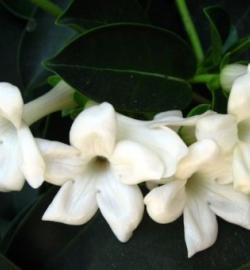
For thousands of years, the jasmine plant has been cultivated not only for the beauty of its small, white, star-like flowers, but it has also been prized for its intoxicating scent. Originating in

Pakistan National Tree Deodar
Cedrus deodara (deodar cedar, Himalayan cedar, or deodar/devdar/devadar/devadaru; Urdu: ديودار deodār/devdār; Punjabi: دیار is a species of cedar native to the western Himalayas in eastern

Pakistan National Animal Markhor
The markhor (Capra falconeri; Pashto: مرغومی marǧūmi; Persian/Urdu: مارخور), also known as the screw horn goat, is a large species of wild goat that is found in northeastern Afghanistan,

Pakistan National Bird Chakor
The chukar partridge or chukar (Alectoris chukar) is a Eurasian upland gamebird in the pheasant family Phasianidae. It has been considered to form a superspecies complex along with the rock
Pakistan National Language Urdu
Urdu (اردو) is the national language (قومی زبان), lingua franca and one of two official languages of Pakistan (the other currently being English). Although only about 8% of Pakistanis speak it

Pakistan National Game Hockey
Field Hockey is the national game of Pakistan and wearing green shirts represent the Pakistan Hockey Federation in international field hockey competitions. Even though field hockey is the

Nishan-i-Haider
The Nishan-i-Haider (Urdu: نشان حیدر meaning "Order of the Lion") is the Highest' military award given by Pakistan. Awarded "to those who have performed acts of greatest heroism or most

Hilal-i-Jur'at
The Hilal-i-Jur'at (Urdu: ہلال جرات [ɦəˈlaːl ə dʒʊˈraːt̪], as if it were Halāl-e-Jurāt; English: Crescent of Courage , sometimes spelled as Hilal-e-Jur'at, Hilal-e-Jurat, Hilal-i-Jurrat and

Sitara-e-Jurat
Sitara-e-Jurat (Star of Courage) is the third highest military award of Pakistan. It was established in 1957 after Pakistan became a Republic; however, it was instituted retrospectively back to

Sitara-e-Basalat
Sitara-e-Basalat (Star of Good Conduct) is a non-operational award of Pakistan Armed Forces given to individuals for distinguished acts of gallantry, valor or courage while performing their duty.[
a direction as to the intended recipient, written on or attached to a piece of mail.
Useful link
Up comming events
Pak Cultural Society
PAKISTAN DAY 2022
PAKISTAN DAY 2022 IS BEING CELEBRATED BY THE PAK CULTURAL SOCIETY IN AN ENTERTAINING AND COLORFUL EVENT AS FOLLOWS:
VENUE : WFIA COMMUNITY CENTRE 119-121 GROVE ROAD, WALTHAMSTOW LONDON E4 9AJ
DATE : 27 MARCH 2022 TIME: 3-7 PM
ALL INVITED.
What is the national flower of Pakistan,Meaning and Symbolism?
The national flower of Pakistan holds deep meaning and symbolism , representing the rich heritage and cultural identity of the country. The national flower of Pakistan is jasmine, a genus of shrubs and vines known for its sweet smell and beautiful white flowers.
Jasmine became the national flower of Pakistan on July 15, 1961, carrying with it the hopes and aspirations of the Pakistani people. This symbolic flower embodies the spirit of the nation, signifying beauty, resilience, and national unity.
Furthermore, the national flower of Pakistan serves as a unifying symbol, fostering a sense of identity and pride among the Pakistani people. It represents the diversity and cultural richness that exists within the nation, bringing together individuals from different backgrounds and regions.
The Beauty of Jasmine – Pakistan’s National Flower
The national flower of Pakistan, jasmine, captivates with its delicate white petals and alluring fragrance. This beautiful flower belongs to the genus of shrubs and vines known for its sweet smell and stunning appearance.
Jasmine was designated as the national flower of Pakistan on July 15, 1961, symbolizing hope, beauty, and national unity. This fragrant flower plays a vital role in various celebrations and everyday life in Pakistan.
It is prominently used in wedding ceremonies and special occasions, adorning the bride’s hair and creating an enchanting ambiance.
Beyond its visual and aromatic beauty, jasmine is also utilized in various forms. The scent of jasmine is captured in perfumes, essential oils, and teas, spreading its captivating fragrance far and wide. Its versatility adds to its appeal and makes it a cherished element of Pakistani culture.
| Key Features of Jasmine – Pakistan’s National Flower | |
|---|---|
| Fragrance | Alluring and sweet |
| Appearance | Delicate white petals |
| Symbolism | Purity, innocence, and beauty |
| Cultural Significance | King of flowers, presence in literature, poetry, and art |
| National Emblem since | July 15, 1961 |
Symbolism and Cultural Significance of Jasmine in Pakistan
Jasmine, the national flower of Pakistan, symbolizes purity, innocence, and beauty, and is deeply ingrained in the cultural fabric of the country.
It is commonly used in wedding ceremonies, where it signifies the purity and beauty of the bride. The intoxicating fragrance of jasmine is said to bring good luck and prosperity, making it an essential element in auspicious occasions and celebrations.
Cultural Symbolism of Jasmine in Pakistan
| Symbolism | Meaning |
|---|---|
| Purity | Represents the pure and innocent nature of the soul |
| Beauty | Serves as a reminder of the inherent beauty of the human spirit |
| Hope | Symbolizes optimism and a brighter future |
| Romance | Evokes feelings of love, longing, and passion |
In recognition of its cultural significance, jasmine was officially designated as the national flower of Pakistan on July 15, 1961.
Beyond its symbolic value, jasmine’s fragrance holds a special place in the everyday lives of Pakistanis. The enchanting scent of the flower can be found in perfumes, oils, and teas, providing a sensory experience that is both soothing and invigorating.
Whether used as a personal fragrance or enjoyed in a cup of aromatic tea, the essence of jasmine brings an element of serenity and joy to daily routines.
In conclusion , jasmine, the national flower of Pakistan, is more than just a beautiful blossom. It is a symbol of purity, innocence, and beauty that resonates deeply within the cultural identity of the country.
The Journey to National Emblem
The remarkable journey of jasmine, from a beloved flower to the national emblem of Pakistan, is a testament to its enduring significance. Jasmine, known for its sweet smell and beautiful white flowers, holds a special place in Pakistani culture. Associated with purity, innocence, and beauty, it is affectionately called the “king of flowers.”
On July 15, 1961, jasmine was officially declared the national flower of Pakistan, solidifying its symbolic status within the country. This designation reflects the deep-rooted cultural importance of jasmine and its representation of hope, beauty, and national unity.
Furthermore, jasmine’s fragrance is highly valued and finds its way into various forms. It is a popular ingredient in perfumes, essential oils, and teas, providing a refreshing and invigorating aroma. This versatility only adds to the flower’s significance and widespread use.
| Jasmine Facts | |
|---|---|
| Scientific Name | Jasminum |
| Family | Oleaceae |
| Native to | Tropical and warm temperate regions of Eurasia, Australasia, and Oceania |
| Symbolism | Purity, innocence, beauty |
| Significance | Symbol of hope, beauty, and national unity in Pakistan |
Jasmine in Celebrations and Everyday Life
Weddings in Pakistan are grand affairs, and jasmine plays a significant role in these celebrations. The flower is often used to create exquisite floral arrangements, with its delicate petals and sweet aroma adding a romantic touch to the festivities.
The flower is often used to create decorative wreaths, bouquets, and even room sprays, allowing its fragrance to permeate homes and create a soothing ambiance.
| Uses of Jasmine in Pakistan | Examples |
|---|---|
| Wedding Decorations | Jasmine garlands, floral arrangements |
| Bridal Adornments | Jasmine garlands, bridal hairstyles |
| Home Decor | Decorative wreaths, room sprays |
| Perfumes and Teas | Jasmine-infused perfumes, teas |
The Versatility of Jasmine’s Fragrance
Jasmine’s enchanting fragrance is not limited to its presence in celebrations and home decor. The flower’s scent is captured in various forms, such as perfumes, essential oils, and teas.
Perfumes infused with jasmine are sought after for their captivating aroma, often being described as sensual and uplifting. Similarly, jasmine tea is known for its soothing properties and delightful scent, making it a popular choice among tea enthusiasts.
As the national flower of Pakistan, jasmine holds deep cultural significance and represents the unity and beauty of the nation. It serves as a reminder of the rich traditions, poetry, and art that are deeply ingrained in Pakistani culture.
Jasmine’s Fragrance in Various Forms
The captivating fragrance of jasmine, Pakistan’s symbolic flower , is cherished and enjoyed in various forms, from perfumes to essential oils and teas.
The scent of jasmine is highly sought after for its exquisite floral notes that evoke a sense of peace and serenity. In perfumes, jasmine adds a touch of elegance and sophistication, creating a sensual and alluring aura.
| Forms of Jasmine Fragrance |
|---|
| Perfumes |
| Essential Oils |
| Teas |
Whether it is the lingering scent of jasmine in the air, the luxurious touch of jasmine-infused products, or the comforting sip of jasmine tea, the fragrance of jasmine brings a sense of enchantment and delight. Its versatility in various forms allows people to experience the beauty and allure of Pakistan’s symbolic flower in their everyday lives.
Cultural Significance and National Unity
Known as the “king of flowers,” jasmine’s enchanting fragrance and exquisite white blooms have captivated the hearts of Pakistanis for generations. It features prominently in the country’s literature, poetry, and art, inspiring creativity and evoking a sense of longing and romance.
The Role of Jasmine in Celebrations and Everyday Life
| Celebrations | Everyday Life |
|---|---|
| Jasmine garlands in wedding ceremonies | Jasmine plants in homes and gardens |
| Decorative jasmine motifs in festive events | Jasmine-scented oils and perfumes |
| Jasmine tea served to guests | Jasmine-infused beauty and skincare products |
The fragrant blooms of jasmine are woven into the fabric of Pakistani life. In celebrations, jasmine garlands adorn the bride and groom, signifying beauty and purity.
Beyond its visual beauty, jasmine’s captivating scent is harnessed in various forms. The flower’s fragrance is infused in oils and perfumes, providing a perfumed essence that reflects the elegance and charm of Pakistani traditions. Jasmine tea is also a popular choice, symbolizing hospitality and warmth when served to guests.
Jasmine’s cultural significance and national unity go hand in hand, acting as a powerful reminder of the rich heritage and shared identity of the Pakistani people. As the national flower, jasmine continues to inspire and captivate, serving as a timeless symbol of hope, beauty, and unity.
The designation of jasmine as the national flower on July 15, 1961, further solidified its importance as a symbol of hope, beauty, and national unity.
What is the national flower of Pakistan?
What is the meaning and symbolism of the national flower of pakistan.
Jasmine is associated with purity, innocence, and beauty in Pakistani culture. It is also known as the “king of flowers” and symbolizes hope, beauty, and national unity.
When did jasmine become the national flower of Pakistan?
How is jasmine used in pakistani culture, tsar imperia.
I love floriography, writing, and adventure. The world contains so many meanings and its fun to learn them through the beauty of flowers.

Jasmine: The National Flower of Pakistan
The National flower of Pakistan is Jasmine. The meanings of the Jasmine flower are related to love and romance. It represents sensuality and beauty. Because of its vivid white color and paradisiacal scent, the jasmine flower is a source of attraction in the gardens. Lovers like to whisper soft words in the moon garden. At night time, the jasmine flower releases its fragrance and usually at the time of the half moon in the evening when the moon is full. It represents motherhood in Christianity.
Scientific Name of National flower of Pakistan
Its scientific name is Jasminum. The flower belongs to the family of Oleaceae (family of olive), order of Lamiales, tribe of Jasmine, and kingdom of Plantae. It is not only the national flower of Pakistan but also the national flower of Indonesia, Syria, and the Philippines.
Meaning of Jasmine Flower
Jasmine ‘s name is taken from the Persian language, where the word Yasmeen means “ gift from God .” Jasmine’s meanings differ according to different cultures.
Names in different countries
- Melati Putih in Indonesia
- Sampaguita in Filipino
- Asian Jasmine, and Sacred Jasmine in English
Benefits Jasmine Oil
Jasmine oil is well known for its fragrant oil. Jasmine flowers contain many valuable components like jasmine, benzyl acetate linalool, several alcohols, terpineol, benzyl benzoate, etc. The primary use of Jasmine oil is in cosmetics and perfumes, creams, soaps, and shampoos. It has properties of relaxation, tranquilizing, and stimulants for sexual desire.
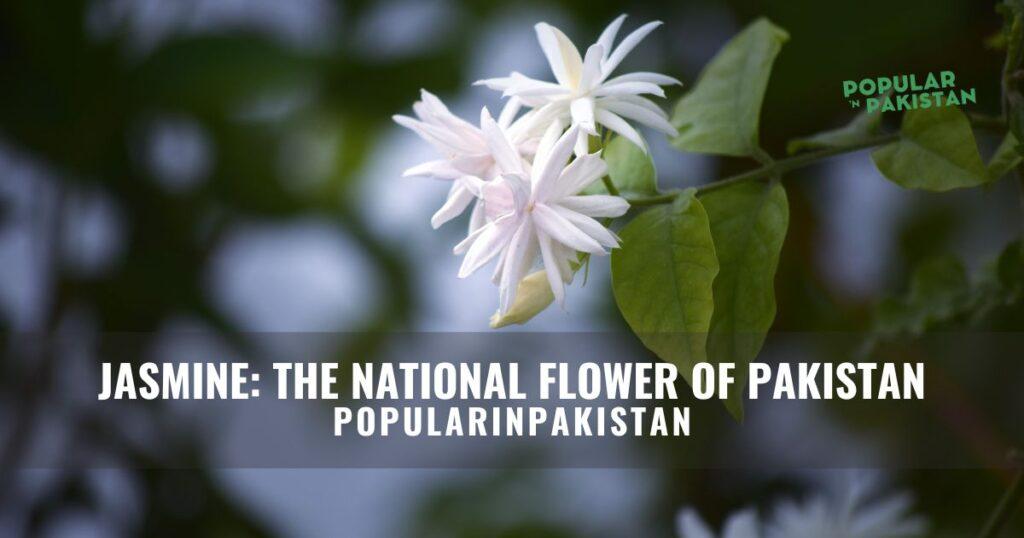
Uses of Jasmine Flower
National Flower of Pakistan
Jasmine is used in different events like weddings, school, college’s annual function s. In addition, it is used in decorating and making the environment and gardens scented. It is used as a sign of decency, affection, and coherence. Jasmine leaves are evergreen, fleeting, and transient.
The flower’s nectar secretes a sweet liquid that becomes the source of attraction for the pollinators of the scented flowers of Carolina Jasmine. Gelsemium sempervirens is a poisonous variety, but it is used in medicinal preparations in the form of dry roots.
Use of Jasmine in India
In India, the jasmine flower is used for the glory of gods. It is also used to dignify the dead. The flower usually represents the spirit of hope. In India Gajras, Garlands are used on special occasions to be worn by the people. Due to its intoxicating scent released at night, In India, it is also known as“ Queen of the Night” as Its fragrance is released at night.
Use of Jasmine in Western Countries
In Western countries, the jasmine flower represents feelings and emotions of love. It is considered the best gift for a loved one and a partner. Its sensational scent is a symbol of elegance.
Use of Flower in Pakistan
In Pakistan, wedding couples like to wear garlands on the occasion of their wedding, made of white Jasmine and red roses. It is mainly used on various occasions, for example, in schools and college’s annual functions in Pakistan.
Over 200 species of flowers are present. Flowers symbolize innocence, love, and purity and are used in the decoration of various events, streets, and gardens.
It can be used on a domestic and industrial level. Jasmine flower is used in the formation of perfume. Jasmine is used in herbal medicine. Jasmine flower is used for flavored and fragrant water.
Some provinces of Pakistan’s province like KPK have more effective use of flowers. They use flowers to wear in their wedding events and the effective use of Jasmine in their rituals. They wear zharnki in their wedding ceremonies. Word Zharanki is derived from the Pashto language.
Physical Appearance of Jasmine Flower
The Jasmine plant’s stem is usually about 10 to 15 feet long. The growth rate is almost recorded as 12 to 24 inches per year. To avoid jamming, plants must be kept apart at least 8 feet away for better growth. The flower has six lobes.
The plant of the jasmine flower blooms for 4 hours a day in the minimum light of the sun. Jasmine’s flower has a very pleasing fragrance.
Jasmine flower is a small flower with a white color in a star shape. The flower has been produced due to its beauty and fragrance for thousands of years. The jasmine plant was first built in India, China, and the Middle East. After that, the flower was brought to France, Italy, and the Mediterranean. From there, it spread to Western Europe and Britain, and now Jasmine is produced across the world.
Jasmine has different varieties, and each type of Jasmine represents different meanings. However, because of its attractive scent, this flower is found in almost every garden.
The white variety of the jasmine flower represents attachment and symbolizes sensuality for love. That’s why Jasmine is known as a national flower.
Jasmine as a National Flower
Each country represents its identity by symbols, animals, birds, flags, anthem, sport, trees, buildings, parks, etc. Similarly, the national flower also symbolizes a distinct meaning of the nation’s principles.
It has multiple uses like herbal medicine, creams and perfumes, soaps, shampoos, and air fresheners. And is used in food and various dishes used in decoration. Because of these facts and properties, the government of Pakistan decided to announce Jasmine as a national flower of Pakistan .
White Jasmine symbolizes love and generosity.
- In our country jasmine flowers are very plentiful, that is why they are chosen as a national flower.
- The flag of Pakistan has white color, same as the white color of Jasmine and this white color represents peace and wisdom.
Read More: National Tree of Pakistan
Types of Jasmine
Two types of flowers are observed, True Jasmine and False Jasmine . Both the flowers have the same scent that’s why they seem difficult to distinguish. The True Jasmine is taken from the Oleaceae family. It is a shrub with thick branches and has fragile stems. It is a nonpoisonous plant. It has oval, green leaves and has white flowers. The false Jasmine is taken from the Gelsemium and Loganiaceae family. This flower is poisonous to humans.
Color Diversity of Jasmine Flower
Most of the species have white color flowers, and a few have yellow color flowers. This flower belongs to the Himalayas in China. The flower blooms after six months on the Plantation. Its Plantation takes place in summer and spring.
The national flower of Pakistan is the Jasmine. Jasmine, also known as “Chameli” in Pakistan, holds cultural significance and is highly valued for its fragrance and beauty. It is widely cultivated and admired for its delicate white flowers and sweet scent.
The Jasmine flower symbolizes purity, elegance, and grace, and it has deep cultural and traditional associations in Pakistan. It is often used in religious ceremonies, weddings, and other special occasions. Jasmine is also used in the production of perfumes, oils, and traditional medicines.
As the national flower, Jasmine represents the natural beauty and rich diversity of Pakistan. It is cherished as a symbol of national pride and serves as a reminder of the country’s cultural heritage.

Author description olor sit amet, consectetur adipiscing elit. Sed pulvinar ligula augue, quis bibendum tellus scelerisque venenatis. Pellentesque porta nisi mi. In hac habitasse platea dictumst. Etiam risus elit, molestie
National Dress of Pakistan and Provincial Clothing Styles
Symbol of unity: exploring the national emblem of pakistan, leave a comment cancel reply.
Save my name, email, and website in this browser for the next time I comment.
Jasmine: The National Flower of Pakistan
Pakistan is a country of diverse cultures. It is one of the fewer nations with all four kinds of weather, lots of different ethnicities and religions. Also, it is full of natural resources and has the most diverse culture of natural stuff. Jasmine is the National Flower of Pakistan and today; we are going to talk about this flower in detail. We are going to talk about its biological origin, history, and other facts.
Jasmine: The National Flower of Pakistan Biological Origin and History:
Jasmine is a flower which mostly grows in East and South Asia. This plant is mostly known for its flower which is Jasmine flower. Now, you would have seen most of this flower is used for decoration in houses and gardens. This is because of its enchanting fragrance and lovely white flowers which decorate the gardens quite beautifully.
If we talk about the biological origin of this flower, it is from the Plantae Kingdom and is from the genus of vines and shrubs. This plant mostly grows in the parts of Australia and Asia and that is why Pakistan has made this official that they are the ones who will use this as their national symbol.
Jasmine: The National Flower of Pakistan Facts:
Jasmine, besides its uses of decoration in the gardens, also has some other benefits. In China, the Chinese people drink Jasmine Flower Tea. It is a special extract which is consumed mainly in China and it is one of the things they are famous for.
In Pakistan, even though it is the national flower, its cultivation is not too much. However, still, it is a big part of different occasions such as the wedding and birthday parties. Since it is in abundance, its sale on different flower shops is quite cheap.
Related Articles

National Flower of Sicily | Carnation Flower of Sicily
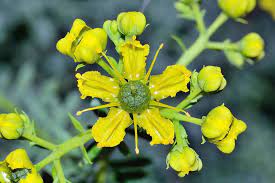
National Flower of Lithuania | Rue flower of Lithuania
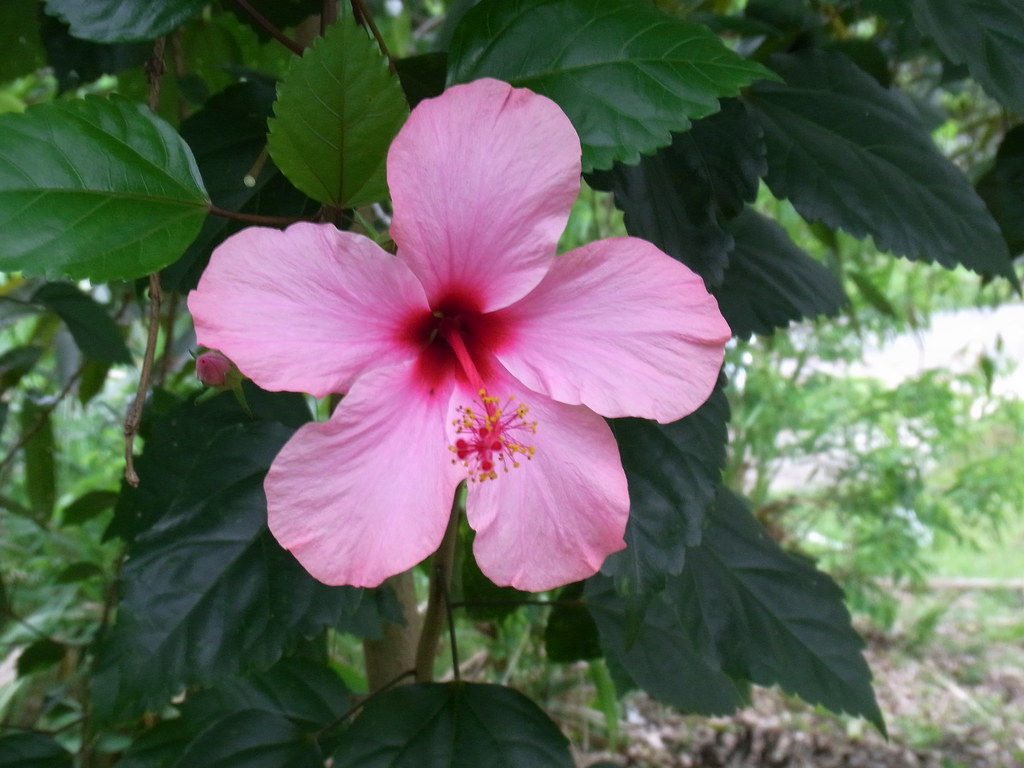
National Flower of Puerto Rico | Maga de Flora Flower of Puerto Rico
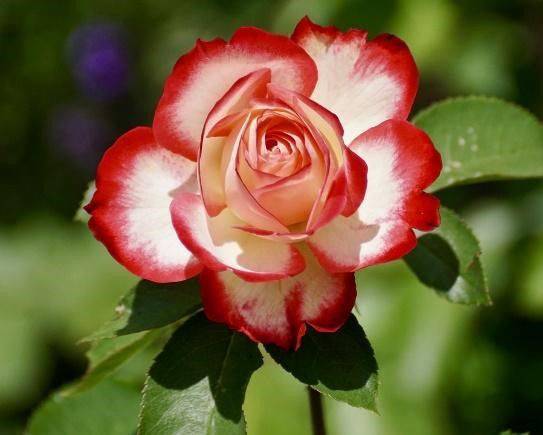
National Flower of England | Tudor Rose Flower of England
Leave a reply cancel reply.
Your email address will not be published. Required fields are marked *
Save my name, email, and website in this browser for the next time I comment.
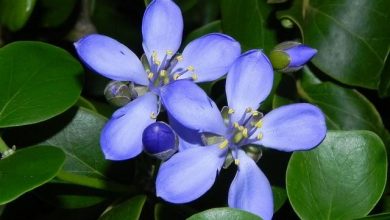
National Flower of Jamaica | Lignum vitae Flower of Jamaica
Pakistan Pur
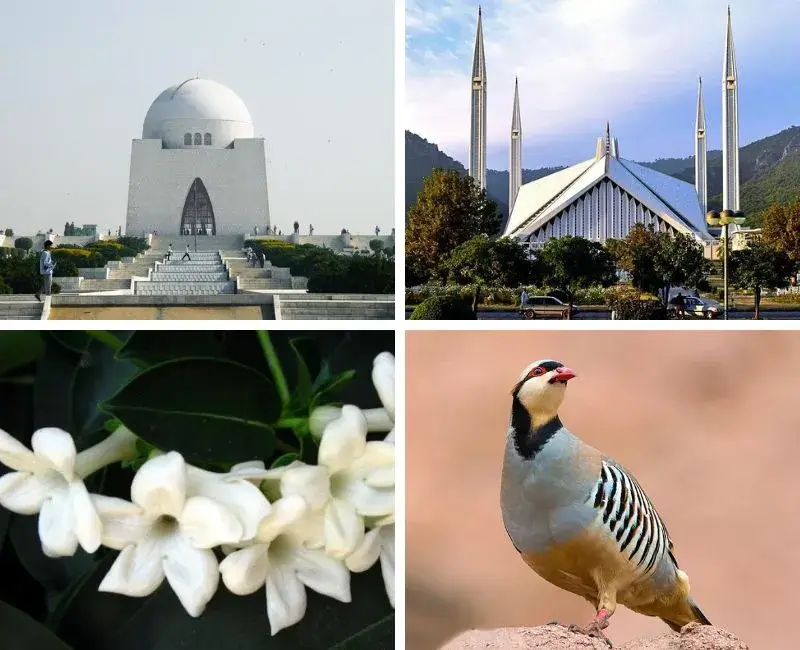
National Symbols of Pakistan – A Representation of Pride and Heritage
Pakistan, a country founded only over seven decades ago, has various national symbols that represent the heritage and pride of the nation. These symbols have their origins from before Pakistan’s inception and hold significant value in the country’s political, social, and cultural spectrum.
Each emblem carries a unique meaning and represents Pakistan’s rich cultural and historical background. In this blog post, we will take a deep dive into the national symbols of Pakistan, their significance and importance.
Here is our deatailed post about the recent changes in the political map of Pakistan .
List of National Symbols of Pakistan with Pictures
National Flag: The flag of Pakistan is a green field with a white crescent moon and a five-rayed star at its center, and a vertical white stripe at the hoist side. It represents the country’s commitment to Islam and the rights of religious minorities.
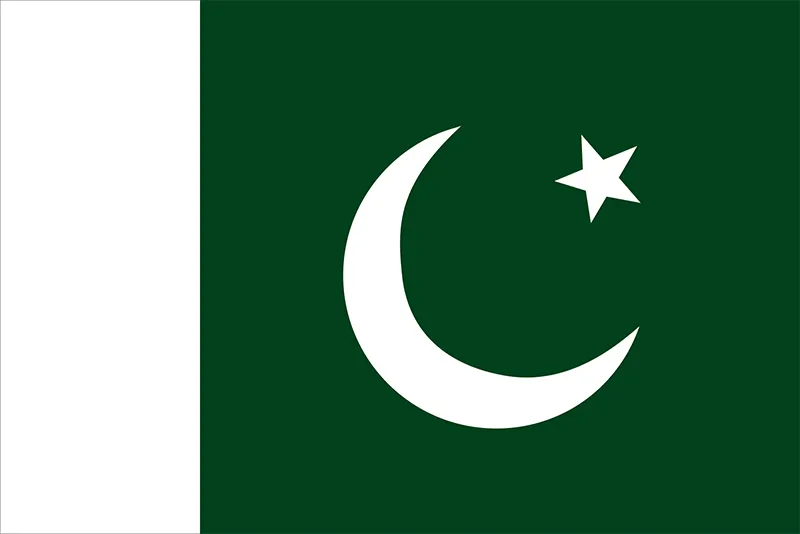
National Animal: Markhor: The Markhor is a large species of wild goat that is found in northeastern Afghanistan, northern and central Pakistan, Northern India, southern Tajikistan and southern Uzbekistan.
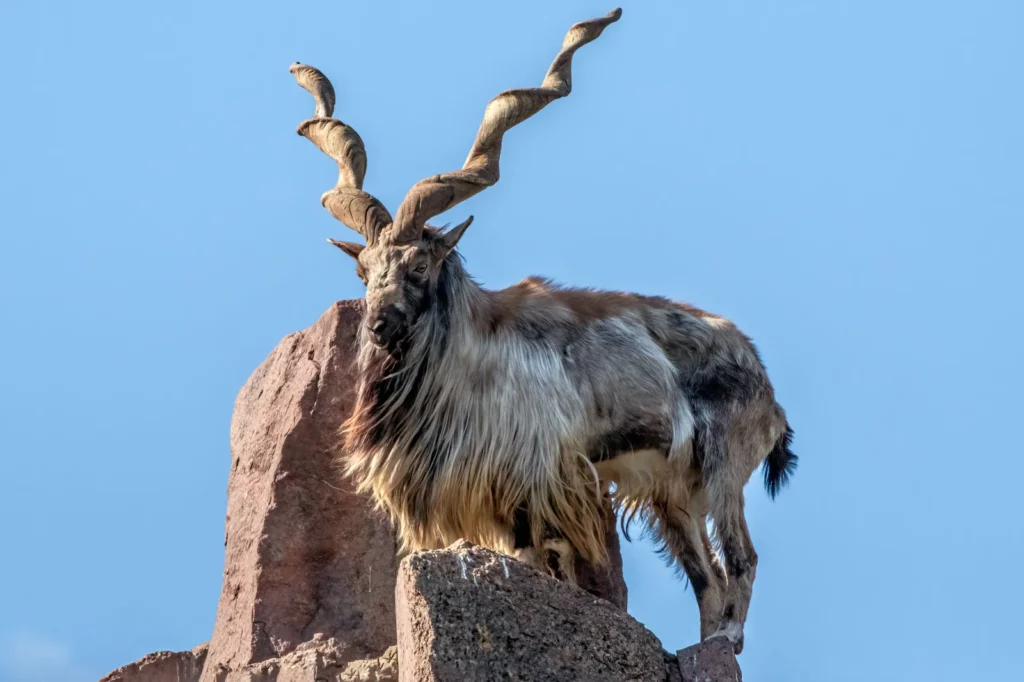
National Bird: Chukar Partridge: The Chukar Partridge is a Eurasian upland gamebird in the pheasant family Phasianidae.
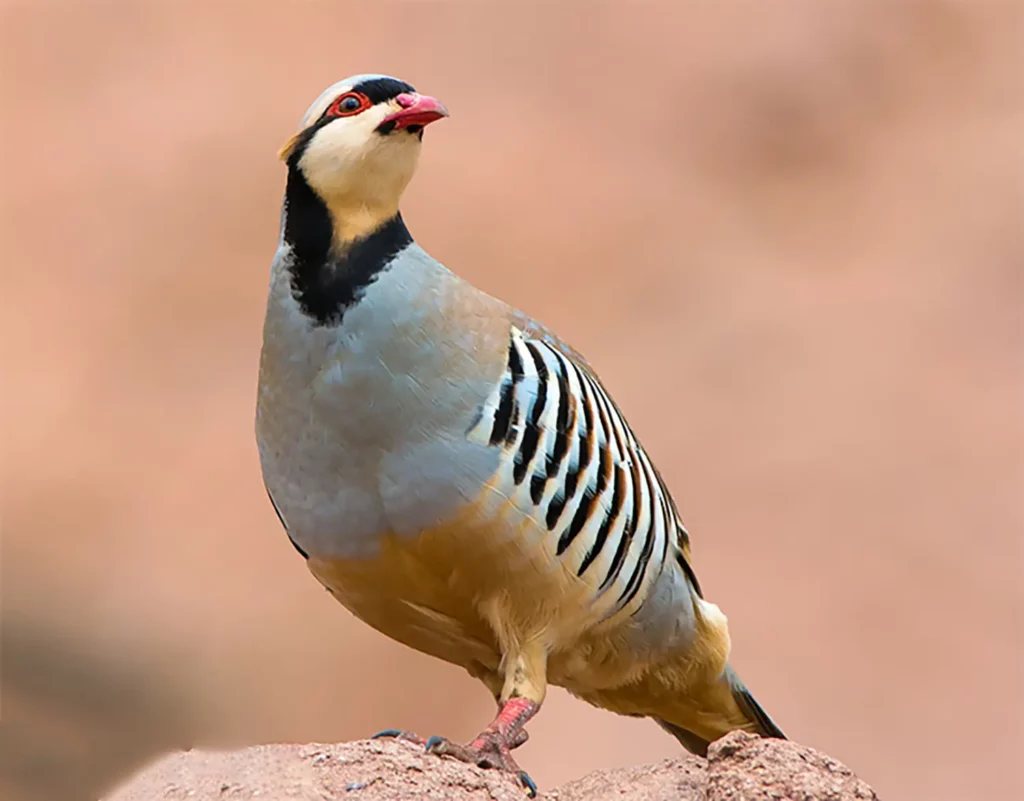
National Flower: Jasmine: Jasmine is a genus of shrubs and vines in the olive family. It is known for its intense fragrance and is widely cultivated for its flowers.
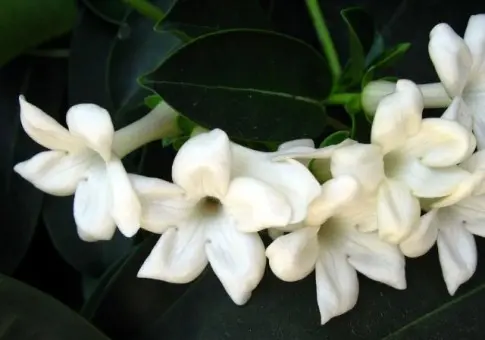
National Tree: Deodar: Deodar is a species of cedar native to the western Himalayas in eastern Afghanistan, northern Pakistan, and India, south western most Tibet and western Nepal.
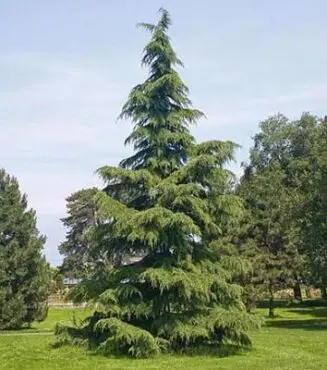
National Mosque: Faisal Mosque: The Faisal Mosque is the largest mosque in Pakistan, located in the national capital city of Islamabad.
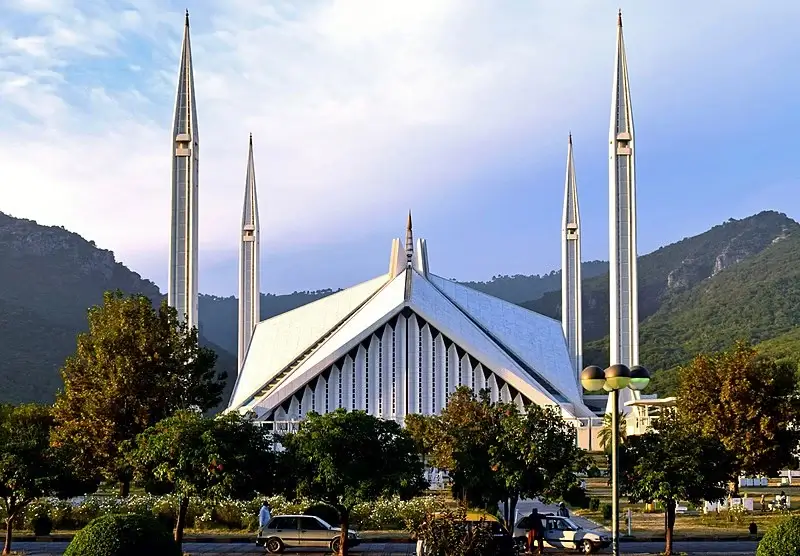
National Mausoleum: Mazar-e-Quaid: Mazar-e-Quaid is the tomb of the founder of Pakistan, Muhammad Ali Jinnah.
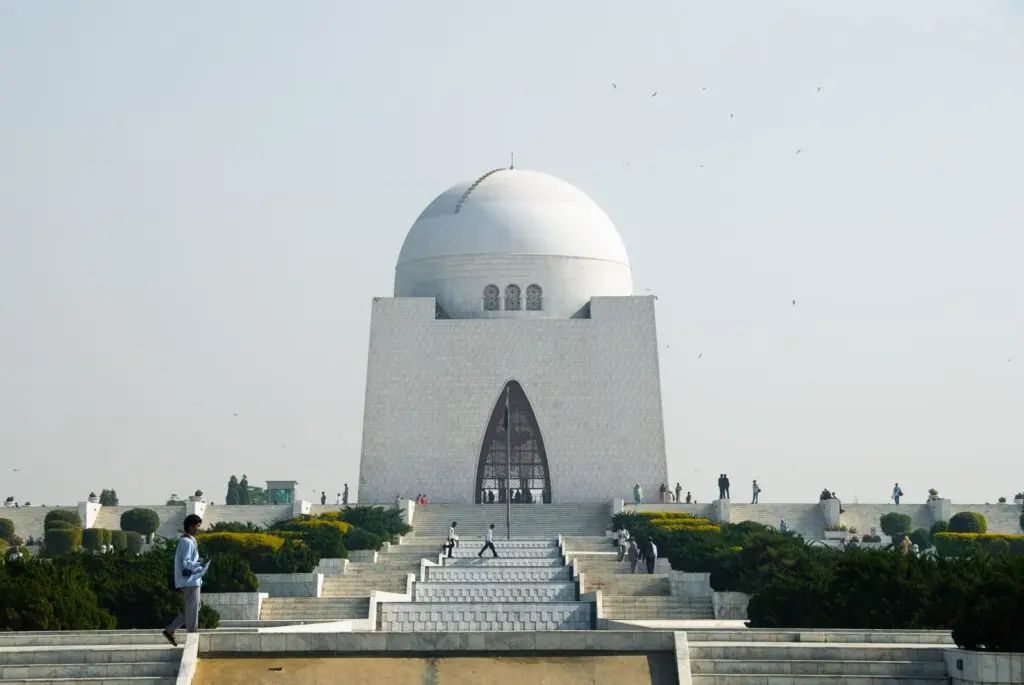
The National Flag
History of the national flag.
The national flag of Pakistan was designed by Syed Amir-uddin Kedwaii and was officially adopted by the Constituent Assembly on August 11, 1947, three days before the country’s independence.
Design and Meaning
The flag comprises a green field with a white stripe on the left, and there is a white star and crescent in the green field. The flag design holds deep symbolic significance for Pakistan.
- Green Field: The larger portion of the flag is dark green in color, representing the Muslim majority of Pakistan. This vibrant green color symbolizes prosperity and good fortune.
- White Stripe: The white stripe on the left represents religious minorities and minority religions in Pakistan. It signifies the country’s commitment to both religious and ethnic diversity.
- Star and Crescent: The white star and crescent are traditional symbols of Islam, and they symbolize light and progress, respectively. The star’s five points denote the five pillars of Islam.
Creator’s Vision
Syed Amir-uddin Kedwaii, an intellectual and scholar, aimed to design a flag that would encapsulate Pakistan’s ideological foundation and vision. He wanted the flag to represent not just the Muslim majority but also to pay respect to minority religions, hence the white stripe. The star and crescent were incorporated as a nod to the Islamic faith, which is the religion of the majority in Pakistan.
The National Emblem
History of the national emblem.
The National Emblem of Pakistan was adopted in 1954, seven years after the country’s independence. It was designed by Chaudhry Abdul Malik, a renowned architect and artist of his time.
Design and Symbolism
The emblem is highly symbolic, incorporating multiple elements that each represent a unique aspect of Pakistan.
- Shield: The central feature of the emblem is a shield which is divided into four parts, each featuring a major product of Pakistan: cotton, wheat, tea, and jute. These represent the country’s agricultural strength.
- Floral Wreath: Surrounding the shield is a floral wreath of Jasmine, the national flower of Pakistan, implying the aesthetic taste of the people of Pakistan and their love for arts and culture.
- Banner: Below the shield, a scroll contains the national motto of Pakistan in Urdu, which translates as “Faith, Unity, Discipline.” These words were the guiding principles for the nation’s founder, Quaid-e-Azam Muhammad Ali Jinnah.
- The Crescent and Star: Above the shield, the green crescent and star – a representation of Islam and also features on the national flag – signify the ideological foundation of Pakistan.
Public Interest Facts
The National Emblem of Pakistan appears on all official documents, including Pakistani passports, and is etched into government buildings and Pakistani embassies worldwide. Its design illustrates the diversity and unity of Pakistan, celebrating both its cultural heritage and vision for the future. The emblem encapsulates the values and ambitions of Pakistan, serving as a reminder of the country’s identity and ethos.
The National Animal
The Markhor: Pakistan’s Majestic National Animal
Introduction:
- The national animal of Pakistan is the Markhor, a large species of wild goat known for its unique twisted horns.
- This resilient animal is native to the mountainous regions of northern and western Pakistan, primarily residing in the Himalayas, Karakoram, and the Hindukush ranges.
Facts about the Markhor:
- Incredible Agility and Adaptability:
- The Markhor is known for its incredible agility and ability to navigate the rugged, rocky terrain of its high-altitude home.
- It has adapted to survive in harsh mountain environments.
- Majestic Spiral Horns:
- Adult male Markhors possess a majestic pair of spiral horns that can grow up to 160 cm long.
- These horns add to their visual appeal and symbolic significance.
- Meaning Behind the Name:
- The name ‘Markhor’ is derived from two Persian words, ‘Mar’ meaning snake and ‘khor’ meaning eater.
- However, it’s more likely that the name refers to the snake-like twist in its horns.
Role in Ecosystem:
- The Markhor plays a significant role in local ecosystems by controlling vegetation growth and providing prey for large predators like snow leopards and wolves.
- It helps maintain a balanced ecosystem.

Conservation Status:
- Despite being classified as “Near Threatened” on the IUCN Red List, dedicated conservation efforts have helped increase its population over recent years.
- Conservation initiatives have played a vital role in preserving this majestic species.
- The choice of Markhor as the national animal of Pakistan symbolizes the resilience and independence of the nation.
- Just like the Markhor, Pakistan has endured tough times and continues to stand strong, reflecting the spirit of survival and determination.
The National Flower
Jasmine – the national flower.
Beauty in Simplicity
- Jasmine, with its simple beauty and intoxicating fragrance, has been chosen as the national flower of Pakistan.
- The pure white petals symbolize the country’s love for peace and the simple yet profound beauty of its people.
Cultural and Traditional Significance
- Traditionally used in weddings, Jasmine holds immense cultural and emotional significance for the people of Pakistan.
- Being a part of important life events, it is often associated with love, happiness, and new beginnings.
Medicinal Uses
- Apart from its beauty, Jasmine also has medicinal uses.
- Its oil is known for its calming effects and is used in aromatherapy treatments.
- It is also used in teas and herbal remedies for its potential health benefits.
Role in Ecosystem
- Jasmines play a significant role in maintaining the local ecosystem.
- They provide nectar for pollinators like bees and butterflies, thus aiding in the process of pollination.
Conservation Efforts
- Sustained efforts are being made to protect and propagate Jasmine due to its environmental, cultural, and medicinal importance.
- These efforts include spreading awareness about the flower’s significance, promoting its cultivation, and protecting its natural habitats.
- The choice of Jasmine as the national flower symbolizes the Pakistani people’s love for beauty, simplicity, and nature.
- Its resilience and ability to thrive in various conditions mirror the strength and resilience of the nation itself.
The National Bird

The Chukar Partridge
The Chukar Partridge, known for its robust and graceful demeanor, is recognized as the national bird of Pakistan. This bird, native to the rocky terrains of Eurasia and parts of Western Asia, is a symbol of resilience and endurance.
Physical Characteristics
The Chukar Partridge is characterized by its distinctive black and white stripes, stout body, and red beak. Its greyish-brown plumage allows it to blend seamlessly into its rocky habitats, while its robust legs are well-suited for its mountainous home.
Habitat and Behavior
These birds are found abundantly in the mountain ranges of Pakistan, where they thrive in steep, rugged terrains. Known for their loud, resonant call, Chukar Partridges are primarily ground-dwelling birds, although they can fly short distances when necessary.
Cultural Significance
The Chukar Partridge holds a significant place in Pakistani culture. Its melodious call is often featured in folk songs and tales, and its hardy nature symbolizes the strength and resilience of the Pakistani people.
Efforts are being undertaken to preserve the Chukar Partridge’s natural habitats. These initiatives involve educating the public about the bird’s significance, restricting hunting, and implementing conservation programs to protect and increase their population.
The Chukar Partridge in Folklore and Literature
The Chukar Partridge’s presence extends beyond the physical realm, making a significant impact in folklore and literature. In various folklores, it is often portrayed as a bird of love and devotion, symbolizing intense and unrequited love. The bird’s call, believed to echo its yearning for its beloved, is a common theme in many traditional songs and poems.
National Drink of Pakistan
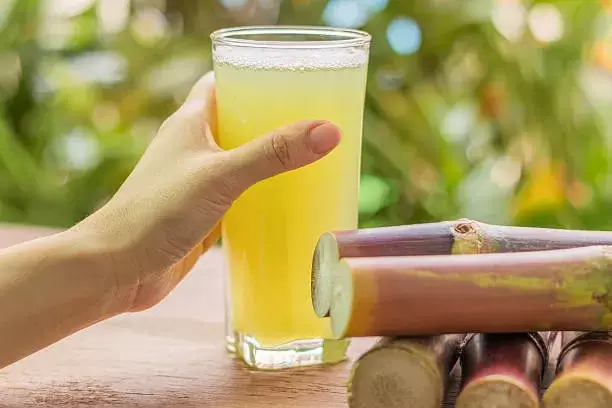
The National Drink of Pakistan: Sugarcane Juice
Sugarcane juice, locally known as ‘roh’, is the national drink of Pakistan. This refreshing drink is extracted from pressed sugarcane and is often served chilled with a dash of lemon and mint to enhance its flavor.
Reason for Selection
The selection of sugarcane juice as the national drink is deeply rooted in Pakistan’s agricultural and economic scenario. Sugarcane is one of the major crops grown in the country, contributing significantly to the national economy. Furthermore, its widespread consumption across the country and affordability made it a popular choice.
Selection Process
The process of adopting sugarcane juice as the national drink was not a formalized process but gradually evolved over the years due to its popularity and cultural significance. It became an unofficial symbol of national identity due to its wide acceptance and consumption across all regions and social strata. Over time, this acceptance was formalized, and sugarcane juice was recognized as the national drink of Pakistan.
National Fruit of Pakistan
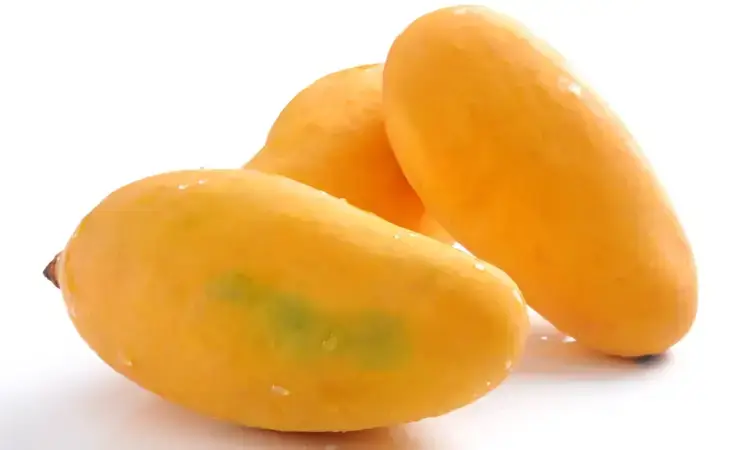
The National Fruit of Pakistan: Mango
The Mango, lovingly referred to as the ‘King of Fruits’, is the national fruit of Pakistan. Known for its rich, sweet flavor and intoxicating aroma, it is a highly cherished fruit in the country.
The suggestion of the Mango as the national fruit of Pakistan did not originate from a single source. Over time, due to its popularity, widespread cultivation, and cultural significance, the Mango became a symbol of Pakistani identity. It is cherished by people from all walks of life, which led to its widespread acceptance as a national symbol. This collective recognition eventually led to its formalization as the national fruit of Pakistan, a status it enjoys to this day.
Variety and Production
Pakistan is home to a multitude of mango varieties, each with its unique taste and texture. The most popular varieties include ‘Sindhri’, ‘Chaunsa’, and ‘Anwar Ratol’. Each year, the country produces nearly 1.9 million tons of mangoes, making it the fifth largest producer of mangoes in the world.
The mango holds a significant place in the culture and traditions of Pakistan. The arrival of the mango season is celebrated with much fanfare, and mango festivals are commonplace during the summer months.
These festivals are not just about savoring the delicious fruit but also about promoting local produce and enhancing trade relationships.
Health Benefits
Mangoes are not just delicious, they’re also packed with numerous health benefits. They’re an excellent source of vitamins A and C, helping boost immunity. Furthermore, they are rich in dietary fiber, promoting digestive health.
The suggestion of the Mango as the national fruit of Pakistan did not originate from a single source. Over time, due to its popularity, widespread cultivation, and cultural significance, the Mango became a symbol of Pakistani identity.
It is cherished by people from all walks of life, which led to its widespread acceptance as a national symbol. This collective recognition eventually led to its formalization as the national fruit of Pakistan, a status it enjoys to this day.
National Game of Pakistan

National Game: Field Hockey
World Cup Victories:
Olympic gold medals:, renowned players:.
- Samiullah Khan (aka the “Flying Horse”)
- Sohail Abbas (holds the record for most goals scored in international field hockey)
Current Status
- Ranking: 17th in the world
Factors contributing to decline:
- Lack of funding
- Insufficient training facilities
National Tree of Pakistan
The national tree of Pakistan is the Deodar Cedar, or Cedrus deodara in scientific terms. This majestic tree is native to the western Himalayas and the eastern part of Afghanistan. It is widely admired for its natural beauty, height, and unique conical shape.
Description
The Deodar tree can reach heights of up to 250 feet, with a large conical crown in its early years that becomes cylindrical as the tree ages. Its wood is aromatic and durable, making it a favorite for construction and furniture making—particularly in the areas of roofing and paneling.
Significance in Pakistani Culture
The Deodar tree holds a special place in Pakistani culture. Its towering presence is seen as a symbol of endurance, strength, and natural beauty—qualities that are deeply rooted in the national character of Pakistan. The tree is also revered for its historical and spiritual significance, with many Deodar forests considered sacred by local communities.
Ecological Importance
Ecologically, the Deodar Cedar plays a crucial role. It helps maintain the health of the ecosystem by preventing soil erosion, providing a habitat for various wildlife species, and contributing to the area’s microclimate.
Conservation Status
Despite its importance, the Deodar tree faces threats from deforestation and climate change. Conservation efforts are underway to preserve this national treasure and to ensure its survival for future generations.
These include reforestation initiatives, strict regulation of Deodar wood harvesting, and community awareness programs about the ecological importance of the Deodar tree.
National Mosque of Pakistan
Introduction.
The National Mosque of Pakistan, known as Faisal Mosque, is an iconic symbol of Islamabad, the capital city of Pakistan. Its modern and unique design, inspired by the Bedouin tent, stands out remarkably in contrast to the predominantly Mughal-inspired architecture of the country.
The mosque was designed by Turkish architect Vedat Dalokay and was completed in 1986. It was named after the late King Faisal bin Abdul-Aziz of Saudi Arabia, who contributed to its construction.
Architecture
One of the unique features of Faisal Mosque is its unconventional design. The mosque is shaped like a desert Bedouin’s tent and lacks the traditional domes seen in most Islamic architecture. It can accommodate over 100,000 worshippers, making it one of the largest mosques in the world.
The Faisal Mosque holds a significant place in Pakistani culture. It is not just a place of worship, but also a major tourist attraction. The mosque’s modern architecture, coupled with its spiritual atmosphere, symbolizes the aspiration of the new generation of Pakistan to blend tradition with modernity.
Conservation and Maintenance
The mosque is well-maintained under the supervision of the government of Pakistan. Regular conservation efforts are made to ensure its structural integrity and aesthetic beauty. These include regular cleaning, minor repairs, and regular inspection of the mosque’s infrastructure.
Faisal Mosque is a vital symbol of Pakistan’s identity and Islamic heritage. Its striking design and cultural importance make it a must-see landmark for anyone visiting Islamabad.
National Mausoleum
The National Mausoleum, or Mazar-e-Quaid, is the final resting place of Quaid-e-Azam Muhammad Ali Jinnah, the founder of Pakistan. Located in Karachi, it is a significant national symbol and a testament to the struggle for Pakistan’s independence.
The construction of the mausoleum was completed in the 1960s, more than a decade after Jinnah’s death. The structure serves as a tribute to the man who spearheaded the movement for a separate homeland for the Muslims of the Indian subcontinent.
Designed by architect Yahya Merchant, the mausoleum is an iconic example of modern Islamic architecture. It features a cubic base, topped by a large dome, all constructed from white marble. The complex also includes a museum dedicated to Jinnah’s life and work.
Significance
Mazar-e-Quaid serves as a symbol of respect and adoration for Muhammad Ali Jinnah. Each year, official and public ceremonies are held here on national holidays and anniversaries related to Jinnah’s life.
The government of Pakistan oversees the upkeep of the mausoleum. Extensive conservation efforts are made to maintain the mausoleum’s grandeur, including regular cleaning, repairs, and security measures.
The surrounding gardens and park are also well maintained to provide a serene environment for visitors.
National Anthem of Pakistan
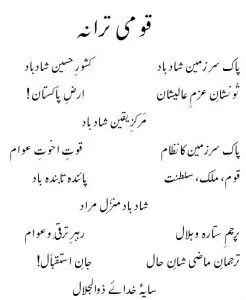
The National Anthem of Pakistan, known as “Qaumi Tarana” in Urdu, is a significant emblem of national unity and pride. Adopted in 1954, three years after the country’s inception, it is performed at state occasions and national holidays, standing as a powerful symbol of Pakistani identity.
Composition
The Qaumi Tarana was composed by Ahmad G. Chagla in 1950, a renowned musician of his time. However, the lyrics, written in highly Persianized Urdu, were not added until 1952. The lyrics were penned by Hafeez Jullundhri, whose words were chosen out of entries from a nationwide competition.
Lyrics and Translation
The lyrics of the anthem, though brief, are potent, encapsulating the vision and spirit of Pakistan. The three stanza composition pays homage to the land of Pakistan, its prosperity, and the ultimate desire for peace and brotherhood amongst its people. Despite the lyrics being primarily in Persian, the anthem is evocative for all Pakistanis.
Musical Structure
The Qaumi Tarana follows the music structure of a marching anthem, exhibiting a rhythmic harmony. The melody consists of eastern music tradition, incorporating 38 different tones of rich traditional orchestration.
Cultural and National Significance
The National Anthem of Pakistan is more than a song; it is a national symbol that represents the aspirations and hopes of the people of Pakistan. It is a source of unity, creating a sense of collective identity and fostering national pride.
Performance
The National Anthem is performed at various state and public events. It is customary to stand in respect when the anthem is played. It is also part of school assemblies, instilling a sense of patriotism from a young age.
Preservation and Promotion
The government of Pakistan ensures the anthem’s preservation and promotes its respectful rendition. The anthem is routinely broadcast on television and radio, reinforcing its standing as a critical element of Pakistan’s cultural and national identity.
National Anthem in Urdu
پاک سرزمین شاد باد
کشورِ حسین شاد باد
تو نشانِ عزمِ عالی شان
!ارضِ پاکستان
مرکزِ یقین شاد باد
پاک سرزمین کا نظام
قوتِ اخوتِ عوام
قوم، ملک، سلطنت
!پائندہ تابندہ باد
شاد باد منزلِ مراد
پرچمِ ستارہ و ہلال
رہبرِ ترقی و کمال
ترجمانِ ماضی، شانِ حال
National symbols of Pakistan are an essential part of the country’s identity and significance. These emblems not only hold cultural and historical value but also represent the country’s natural resources and biodiversity.
These symbols provide a way for Pakistanis to celebrate their identity and be proud of their heritage, both domestically and internationally. By cherishing these emblems, Pakistanis can strengthen their national unity and promote their culture and history.
Related Posts

Pakistan Super League 2024: Teams, Stars, and Schedules Unveiled

Pakistan Political Map: A Deep Dive into its Geographic Boundaries

Democracy in Action: A Look Ahead at Pakistan National Elections 2023
Leave a reply cancel reply.
Your email address will not be published. Required fields are marked *
Save my name, email, and website in this browser for the next time I comment.
- Study Abroad Guide
- Study Abroad Visa
- Study in Australia
- Study in Canada
- Study In china
- Study In Ireland
- Study in UK
- Study in USA
- Sample Papers
- Universities
- Accountancy
- Introduction
- Courses After 10th
- courses after 12th
- Engineering
- Mass Communication
- O/A Level Courses
- Research Thesis
- Short Courses
- Spoken English
- Islamic banks In Pakistan
- Educational Institutes
- Research Institutes in Pakistan
- Admission Fee
- Training & workshops
- Merit Lists
- Roll No Slip
- Technology News
- English Tests
- Amazing Tips
- Girls Fashion
- Latest technology Blog
- Student experience's
- Student jokes
- Ramzan ul Mubarak Special
- Career in Pakistan
- CV & RESUME
- Jobs in Karachi
- jobs in Lahore
- Sample Interview Questions
- Learning articles
- Learning English
- Pakistan Information
- Pakistan Issues
- B.A/BSC Past Papers
- Balochistan and AJK Board
- CSS Past Papers
- Punjab Board
- Sindh Board
- Great Personalities
- Inter Model Papers
- Matric Model Papers
- Scholarships
- Uncategorized
- Book Reviews
- Foreign Universities
- Pakistan Universities
- student stories
- Top Universities
- University Reviews

Pakistan National Flower, Animal and Bird
All information about Pakistan National Flower, Animal, and Bird is mentioned on this page for the knowledge of the students. Pakistan being an independent state has its own several unique national symbols that demonstrate its national uniqueness. The symbols are either being associated due to any significant historical Place event or occasion or with any other critical importance of that particular element in that country. The oldest national symbol for Pakistan is Minar-e-Pakistan which is a building that is associated as the national building a monument on the 23 rd March 1940 due to the observance of the Pakistan resolution.
Table of Contents
National Flower of Pakistan
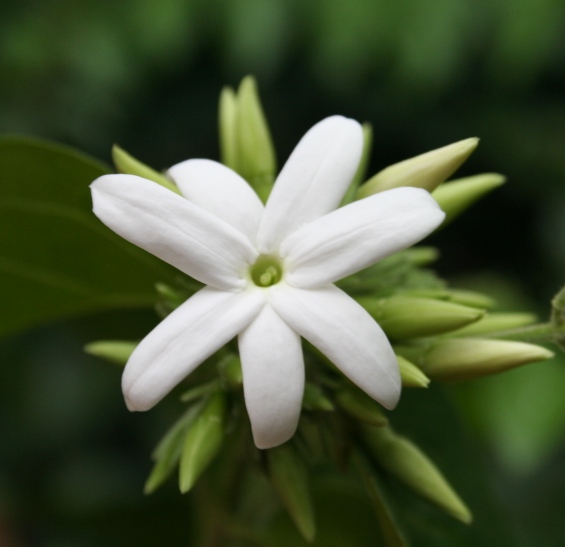
Pakistan has other national symbols, too apart from its national flag , national anthem, and national building. Pakistan does have the national flower as well. The national flower of Pakistan is the Flower of Jasmine which is also known as Campbell. Jasmine is a very unique and beautiful flower that demonstrates the uniqueness of nature. The flower has a combination of Yellow and White colors which is one of the best and eye-pleasing color combinations in the flowers. The Jasmine flower has gleaming and shiny leaves and has a pleasant and graceful fragrance as well. The flower grows in clusters and shrubs and the most preferred season is in summer, and for best growth and grooming the flower needs immense water, fertilizers, and bright sunshine.
National Animal of Pakistan

Pakistan does also have a national animal, the selection of a national animal is based on the availability and uniqueness of the specific creature. The national animal of Pakistan is Markhor. The Markhor is a very unique and endangered species that is as beautiful as ever. The name of Markhor is derived from two Persian words “Mar” which means Snake and “Khor” which means eating. This is a very controversial name because generally, Markhor is vegetarian so they don’t eat snakes but this might be denoted as snake killer as they have hard feats and corkscrewing horns to do so. Markhor is found in the Northern areas of Pakistan or huge hills and mountains.
National Bird of Pakistan

The National Bird of Pakistan is known as Chakor, which is a red-legged partridge. The bird Chakor belongs to a Pheasant family. Chakor is a beautiful bird commonly found in Pakistan that has an ashy pink-brown color with a comparatively larger white color chin and the throat which is boarded with dark black color. These color combinations make the bird adorable and mighty attractive. Chakor is called the non-migratory terrestrial species that makes the groups outside the season of breeding, and when needed the bird prefers to run on feet rather than flying which is a very distinguishing feature of the respective bird.
All information related to Pakistan National Flower, Animal, and Bird is given and hopefully, people will increase their knowledge with the help of this platform.
Moin akhtar
I am committed to helping Pakistani students craft successful career paths by merging their individual passions with market trends. As a career counselor, we'll explore both well-established fields and modern industries to find the best fit for you. With personalized counseling and strategic planning, we aim to transform your educational journey into a thriving professional future.
ye hamara watan sada salamat rahy.
Beautiful bird ever…
Pakistan: ZINDABAD
Post Comment Cancel reply

Discover The National Flower of Pakistan: Jasmine

Written by Rebecca Mathews
Published: February 6, 2023

How to Add Us to Google News

Advertisement
Pakistan is a land of color, scent, and friendly people, so it’s no surprise to discover the richly scented national flower of Pakistan is jasmine.
This beautiful, highly fragranced, and easy-to-grow plant is common across Asia’s wild and cultivated spaces. You may already have it growing in your yard too because it’s popular worldwide for its incredible scent and ability to cover a wall in double quick time.
Let’s discover the national flower of Pakistan: jasmine.
What’s Pakistan’s National Flower?
Pakistan’s national flower is jasmine. It’s a highly scented delicate-looking white flower on a tall vining shrub and part of the olive family. It’s a frequent sight in Pakistan , and naturalized in many other places including Europe, the Americas, and Oceania.
Jasmine is called Chambeli in Pakistan and was chosen to be the national flower of Pakistan on July 15, 1991.

The national flower of Pakistan is jasmine.
©Shaikh Kamal Uddin Khalid/Shutterstock.com
Pakistan: Location and Geography
Pakistan is officially called the Islamic Republic of Pakistan. It’s located in South Asia and borders India, Afghanistan, Iran, and China with a 1,046-kilometer coastland on the Arabian sea. There are 243 million people in Pakistan and Karachi is its capital city.
It has six UNESCO World Heritage sites including the archaeological site of one of the world’s earliest major cities that dates from 2500 BCE, and Shalamar gardens which were built during the Mughal Empire of the 1600s. Shalamar gardens are Persian paradise gardens and include masses of the national flower – jasmine!
Did you know the name Pakistan derives from two Persian words? Pak for holy and stan for place = Holy Place.
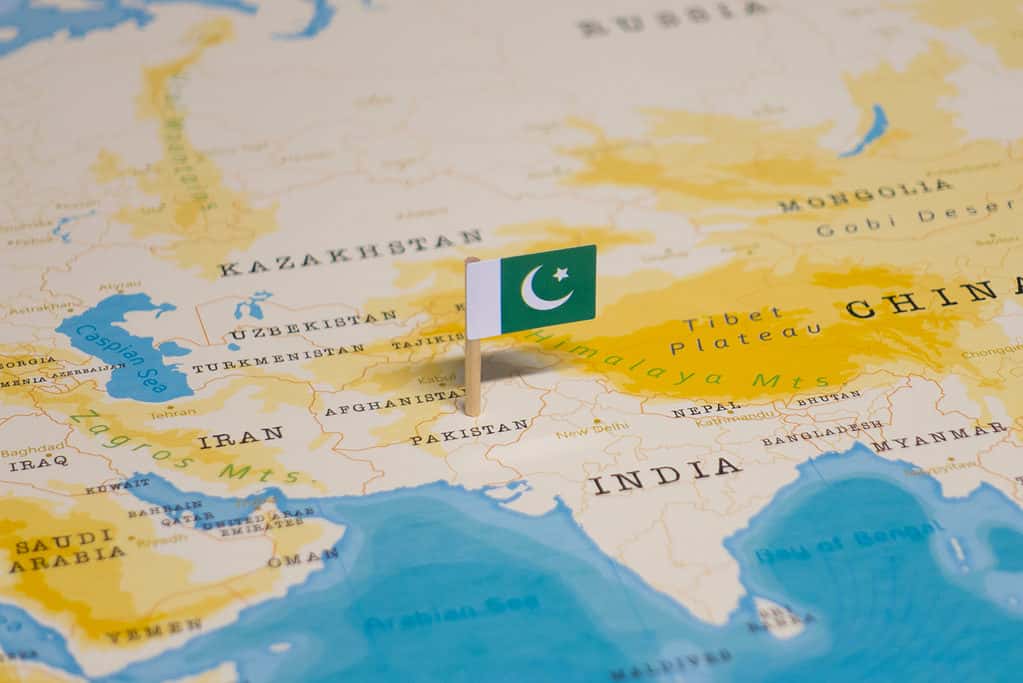
Pakistan is located in South Asia and borders India, Afghanistan, Iran, and China
©hyotographics/Shutterstock.com
Why is the National Flower of Pakistan Jasmine?
Jasmine is the national flower of Pakistan because it is so prevalent there and because it represents their values of connection, friendliness, and humility.
Jasmine is used to honor the gods and the dead in ceremonies and it’s worn as a protective charm in gajra garlands. Modern Pakistanis use traditional jasmine at weddings, where the bride and groom wear jasmine garlands, and even at school fetes. If there’s something social to celebrate in Pakistan, jasmine is always on display.
Jasmine is a popular flower in Pakistan, but it’s also the national flower of Tunisia, Africa . You can never have too much jasmine!
All about Jasmine
The name jasmine is Persian “Yasmeen” which means “gift from god” due to its intoxicating scent.
It’s native to the Himalayas and China, but has naturalized in Pakistan over thousands of years. There are over 200 jasmine species and many more cultivars created by plant breeders.
Jasmine is a night-blooming flower that releases its fragrance at night. The drop in temperature stimulates jasmine flowers into opening, which allows more scent to spread and attract pollinators such as moths.
Jasmine’s bright white color also helps guide moths to their pollen. Traditional stories suggest jasmine’s small star-like flowers are a reflection of the night sky!
Jasmine is a beautiful garden plant that supports pollinators, but it’s also used in industry. Jasmine oil is extracted for cosmetics, perfumes, sedatives, aphrodisiacs, and medicine.
Recent studies indicate jasmine may help treat liver disease, gastric illness, and even cancer. This study shows jasmine oil helped fight lung cancer cells. Lung cancer is the leading cause of cancer-related death worldwide, so this is very welcome research.
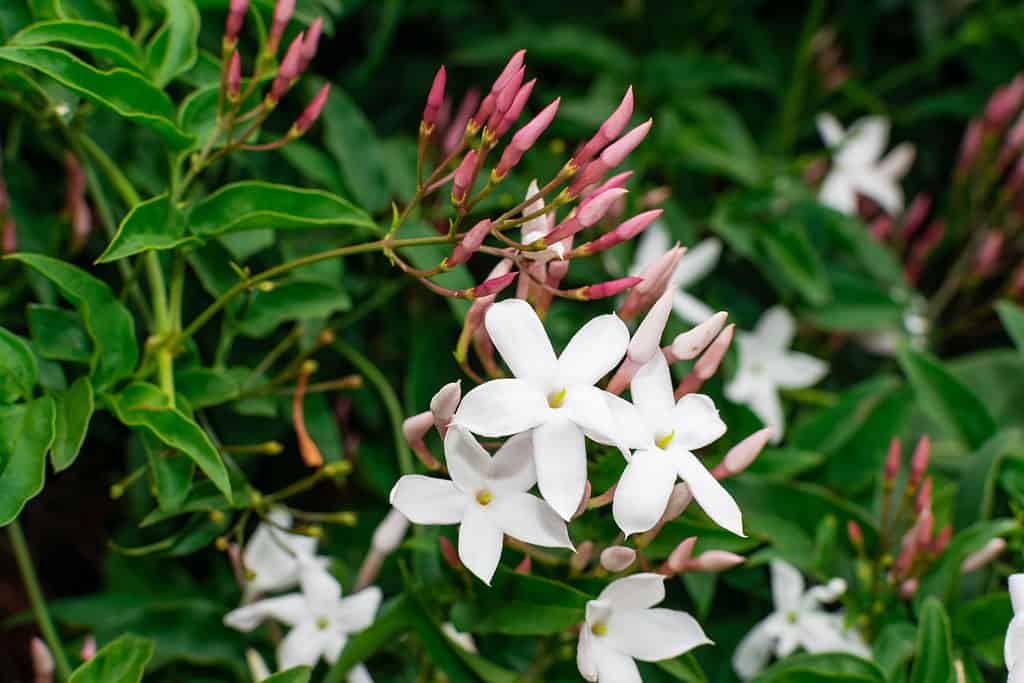
The name jasmine is Persian “Yasmeen” which means “gift from god” due to its intoxicating scent.
©Martin Leber/Shutterstock.com
Is Jasmine Native to Pakistan?
Jasmine is native to the Himalayas and China, so yes, it’s native to Pakistan’s Himalayan regions.
Is Jasmine Evergreen?
It depends.
Some species of jasmine like the star jasmine ( Trachelospermum jasminoides ) are evergreen and they keep their leaves all year round. Evergreen jasmines are perfect for greening up a wall or an ugly old tree stump.
Deciduous species such as common jasmine, ( Jasminum officinale ) lose their leaves in fall and regrow them in spring. They are generally hardier and better for cooler zones.
More on growing jasmine later!
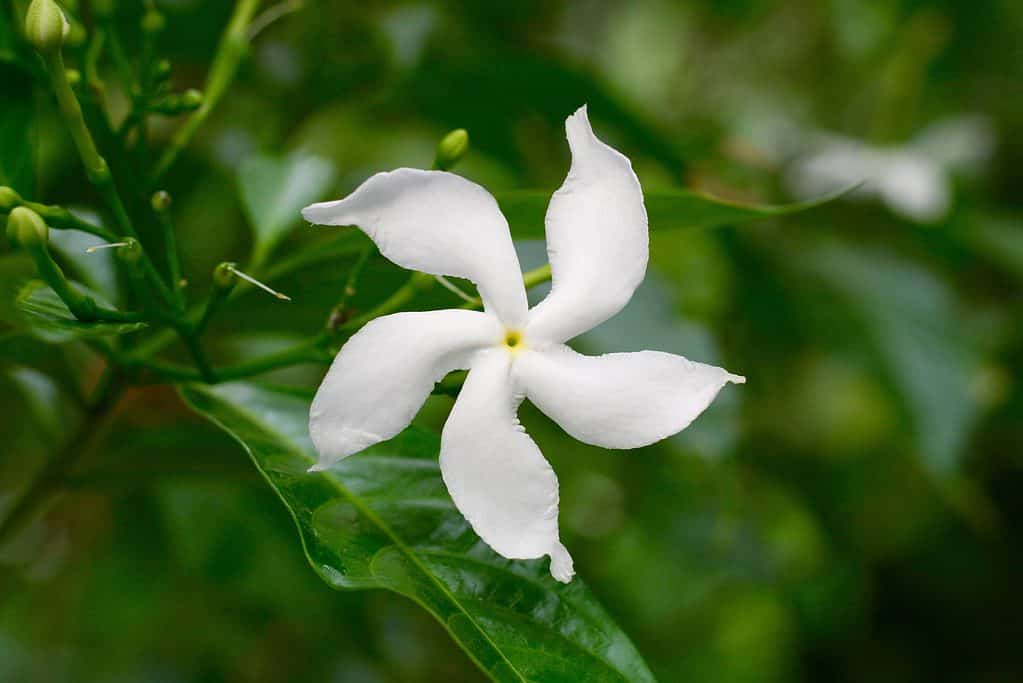
Star jasmine (
) is an evergreen species of jasmine that keeps its leaves year-round.
©maerzkind/Shutterstock.com
Do Jasmine Flowers Smell Sweet?
Yes! Jasmine flowers are deliciously sweet and heady. Pakistanis call jasmine “queen of the night” because it’s night time fragrance is so strong.
Jasmine flowers in late spring and summer, so it’s an excellent choice around seating areas and windows.
Here’s another plant very similar to the jasmine species. It’s called Gelsemium sempervirens or false jasmine, jessamine or woodbine.
It’s a twining vine similar to jasmine, but part of the Gelsemiaceae family and native to tropical America.
False jasmine can have white, yellow or pink flowers and it releases a similar scent, but unlike true jasmine, it’s toxic if eaten and a potent skin irritant.
Despite this, jessamine is a popular plant in America and yellow jessamine is the state flower of South Carolina .
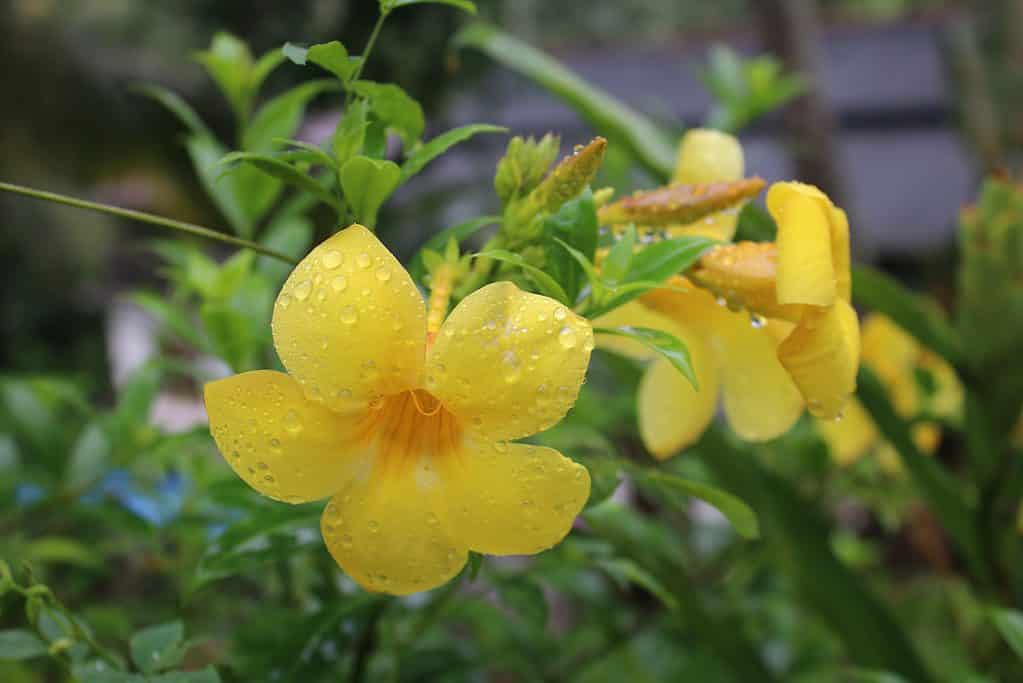
, or false jasmine, can have white, yellow or pink flowers and releases a similar scent to true jasmine.
©Low seen/Shutterstock.com
How Big Does Jasmine Get?
Jasmine is a large, quick-growing vine if it’s left to its own devices. It can reach 10-15 feet long, spread eight feet wide, and pack on 24 inches a year!
It’s totally possible to prune it back to a manageable size. Don’t let the rapid growth potential put you off the national flower of Pakistan.
Is it Toxic?
No, jasmine is not toxic to humans, and the ASPCA reports it’s not toxic to dogs, cats, or horses.
However, it pays to be wary, because as we’ve seen false jasmine is toxic.
How To Easily Grow Jasmine
Fancy the national flower of Pakistan in the yard? Good choice!
Jasmine has pretty star-shaped flowers and knockout scent, but be calm when purchasing! Some are tender and only suitable for greenhouses and conservatories.
Check the label and USDA Growing Zone to make sure your jasmine will survive. If in doubt, go for common jasmine. It’s deciduous and hardy from Zone 6 and up.
Here’s how to plant and care for jasmine
- Choose a moist, but well-drained position
- Ensure the position gets plenty of sun. Jasmine won’t flower well without several hours of sunshine a day
- If you live in a hot Zone (9-11) jasmine grows best in the morning sun, but in afternoon shade
- Erect a sturdy trellis or attach wires to the fence. Jasmine needs strong support to cling to because it’s heavy when the foliage emerges
- Dig a hole twice as wide as the root ball
- Ensure the hole matches the depth of the nursery pot. If jasmine’s stems are buried, they will rot
- Put lots of slow-release fertilizer in the hole
- Place your jasmine in, tilting it towards the trellis or wire support
- Backfill the hole with nutrient-rich soil
- Cover the roots with broken pot shards or an organic mulch like wood chippings to cut down weed competition and trap moisture
- Water it well straight away and keep watering until you can see new growth
- Jasmine needs lots of fertilizer, it’s a hungry plant that grows quickly. In summer, feed it regularly
- After it’s finished flowering, cut it back to your required height. Don’t be shy! Jasmine regenerates at a fast pace. Keep an eye out for nesting birds when you prune because they enjoy the dense foliage of jasmine plants.
Jasmine will grow in a container too. You will need to water and fertilizer more often, but containers offer flexibility such as growing jasmine on a deck or patio.
If you don’t have a suitable trellis or wall, try ground cover jasmine! In Pakistan’s wild spaces, jasmine will spread across the forest floor and colonize any support it reaches.
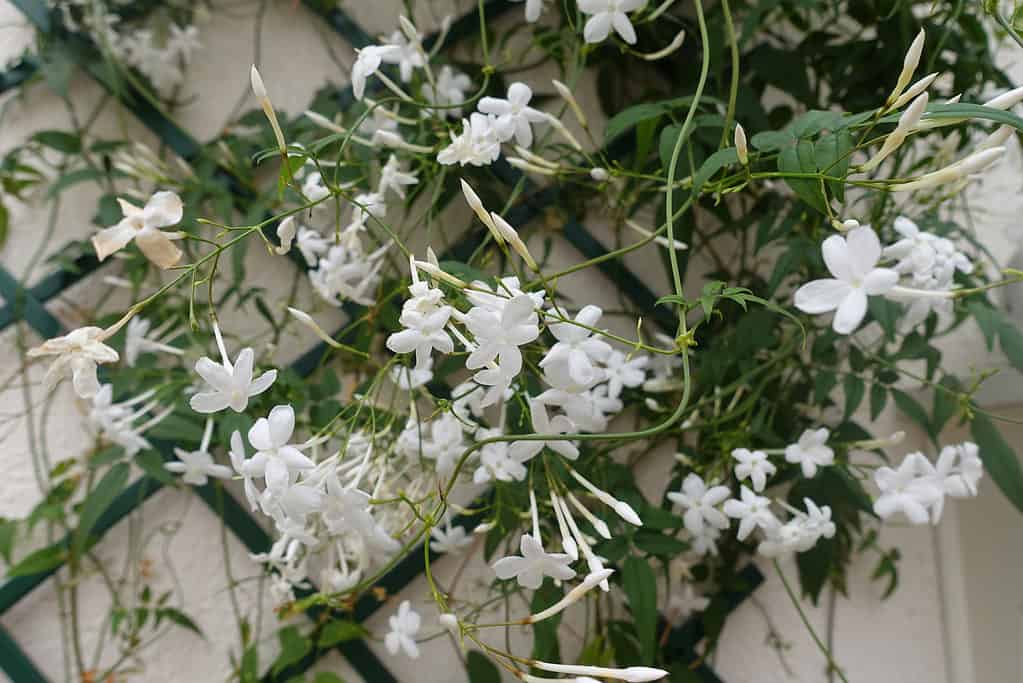
Jasmine needs strong support such as a trellis to cling to because it’s heavy when the foliage emerges.
©iStock.com/nobtis
Does Jasmine Attract Bees?
Let’s discover if the national flower of Pakistan, jasmine, will bring all the bees to your yard.
The answer is yes. Jasmine is a pollinator magnet. It will attract bees, hoverflies, butterflies, beetles and hummingbirds , but because jasmine is a night bloomer it will tempt moths too.
Moths and their larvae are eaten by bats, amphibians, nocturnal birds, spiders, lizards, skunks, and even bears! Moths are clever creatures though. A tiger moth can hear a bat’s echolocation clicks and rapidly change direction, loop, or drop to the ground to avoid detection.
In Pakistan, jasmine flowers are usually pollinated by moths and bees . There’s no arguing the fact that Pakistan’s national flower is a beautifully perfumed stand-alone ecosystem.
- Discover the 10 Most Populated Cities In Pakistan
- The Flag of Pakistan: History, Meaning, and Symbolism
- The Chukar: National Bird of Pakistan

How To Grow A Fig Tree: Your Complete Guide

How to Grow Avocados from Seed to Tree: Your Complete Guide

Discover The 11 Hottest Peppers in the World
Rebecca Mathews
Thank you for reading! Have some feedback for us? Contact the AZ Animals editorial team .
- Sourcing Our Content
- Privacy Policy
- Terms & Conditions
- Editorial Guidelines
As an Amazon Associate I earn from qualifying purchases. Learn more about us & read our affiliate disclosure .
A-Z-Animals.com is Copyright © 2008 - 2024 A-Z Animals
What is the National flower of Pakistan 2024?
National flower of Pakistan is Jasmine
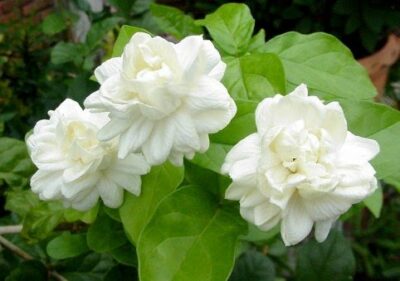
Pakistan National symbols
⏪ Back to the national symbols of Pakistan
What is Pakistan known for?
Pakistan is known for being a vast, culturally diverse nation with a historical past, various languages, and a wide range of cuisines and traditions
Where is Pakistan located?
Neighbours of Pakistan

Questions & Answers about Pakistan
- Who is the national founder of Pakistan?
- Who is the national poet of Pakistan?
- When is the national day of Pakistan?
- What is the national animal of Pakistan?
- What is the ethnicity of Pakistan?
- What is the national dish of Pakistan?
- What is the national dance of Pakistan?
- What is the national emblem / coat of arms of Pakistan?
- What is the religion of Pakistan?
- What is the ISO-4217 of Pakistan?
- What is the domain extension of Pakistan?
- What is the national monument of Pakistan?
- What is the national anthem of Pakistan?
- What is the national fruit of Pakistan?
- What is the national flower of Pakistan?
- What is the national colors of Pakistan?
- What is the national language of Pakistan?
- What is the national sports of Pakistan?
- What is the national tree of Pakistan?
- What is the national bird of Pakistan?
- What is the national currency of Pakistan?
- What is the country code of Pakistan?
- What is the capital city of Pakistan?
- What is the national airline of Pakistan?
- What is the national drink of Pakistan?
- What is the national instrument of Pakistan?
- What is the national dress of Pakistan?
- What is the national hero of Pakistan?
- What is the national mausoleum of Pakistan?
- What is the nationality of Pakistan?
- What is the driving side of Pakistan?
- What is the date format of Pakistan?
- What is the total area of Pakistan?
- What is the timezone of Pakistan?
- What is the national football team of Pakistan?
- What is the tourism slogan of Pakistan?
- What is the literacy rate of Pakistan?
- What is the average elevation of Pakistan?
- What is the coastline of Pakistan?
- What type of plugs and sockets are used in Pakistan?
- What are the emergency telephone numbers of Pakistan?
- What is the alternative name of Pakistan?
- What is the mythical creature of Pakistan?
- What is the national government of Pakistan?
- Who is the president of Pakistan?
- Who is the prime minister of Pakistan?
- What are the proverbs of Pakistan?
Compare Pakistan with other countries
Compare pakistan with its neighbours.
- Vs. Afghanistan
Guess the Flags Quiz

- Capital Cities of the World Capital Cities of Asia Capital Cities of Africa Capital Cities of Europe Capital Cities of North America Capital Cities of South America Capital Cities of Australia & Oceania
- Coat of Arms of the World Coat of Arms - Asia Coat of Arms - Africa Coat of Arms - Europe Coat of Arms - North America Coat of Arms - South America Coat of Arms - Australia & Oceania
- Country Codes of the World Country Codes - Asia Country Codes - Africa Country Codes - Europe Country Codes - North America Country Codes - South America Country Codes - Australia & Oceania
- Languages of the World Asian Languages African Languages European Languages North American Languages South America Languages Oceanic Languages
- Laws & Taxes
- Construction
- Real Estate Trends
- Zameen Product Updates
- Area Guides

National Symbols of Pakistan
Home » Lifestyle » National Symbols of Pakistan
Every country has its unique national heroes, national symbols, and other things. These symbols make up a country’s national identity. All national symbols of Pakistan were chosen at different times after and before the creation of Pakistan.
Here are some of the most important national symbols of Pakistan that we have covered in this post.
National Flag
National emblem, national anthem, national language.
- National Heroes
National Mosque
National poet, national library.
- National Dress
National Mausoleum
National sports, national fruit, national bird, national animal, national tree, national drink, national flower, national colors, national motto, national river, national mountain, national vegetable.
Let’s check out these symbols in detail below.
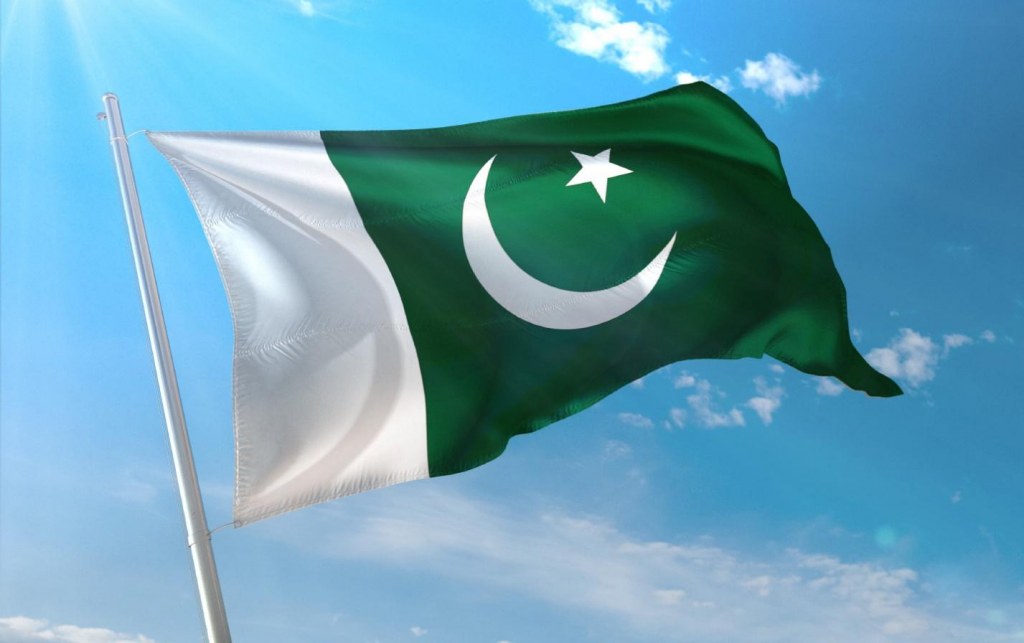
The national flag of Pakistan boasts a simple yet elegant design. Our flag features soothing colours. The green part dominates the flag and represents the Muslim majority of the population. It also contains a crescent and a star. The white stripe portrays the minorities of the country. Pakistan’s national flag was designed by Amir-ud-Din Kidwai. The Constituent Assembly approved the flag on 11th August 1947.
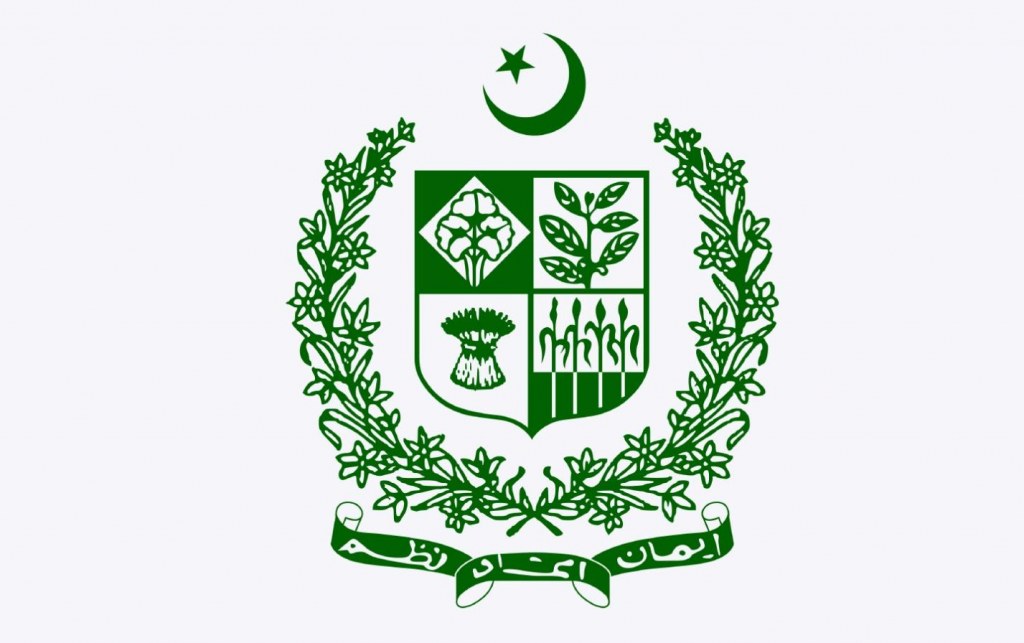
A floral wreath of Jasmine surrounds the shield. Jasmine is also the national flower of Pakistan. This shield is a representation of our Mughal cultural heritage. Moreover, there is a scroll at the bottom, containing the phrase Iman, Ittehad, Tanzeem. This is a famous motto coined by Quaid-e-Azam Muhammad Ali Jinnah, which translates to Faith, Unity, and Discipline.
Adopted in 1954, the emblem of Pakistan, is a beautiful blend of different symbols and colors. Our national emblem is a representation of our beliefs and cultural legacy. The star and crescent at the top represents the religion Islam. There is a quartered shield in the center which contains the four major crops of our country. These include wheat, tea, jute, and cotton.
Initially, Ahmed Ghulam Ali Chagla composed and wrote the national anthem in 1949. But it was Hafeez Jalandhari who penned down the lyrics of the national anthem we love today. It was broadcasted on 13th August 1954 on radio for the first time. However, the government of Pakistan formally announced the national anthem on 16th August 1954. The official performance included Ahmed Rushdi along with 10 other singers.
The national language of Pakistan is Urdu. But, English is the official language of Pakistan. There are several regional languages and dialects spoken in the country. These include Sindhi, Pushto, Punjabi, and Balochi.
National Heroes: Father and Mother of the Nation
We fondly recall the founder of Pakistan, Muhammad Ali Jinnah as Quaid-e-Azam or Baba-e-Qaum. Although, Jinnah practiced as a lawyer before venturing into politics, he served in the All India Muslim League from 1913 until 14 August 1947. He was also the first Governor General of Pakistan. He succumbed to lung cancer and tuberculosis on 11th September 1948.
Fatima Jinnah or the mother of the nation, was the younger sister of Jinnah. Popularly known as Madr-i-Millat, Fatima Jinnah was a dental surgeon. But she actively fought for independence. She continued to participate in the country’s politics. Fatima Jinnah died at the age of 73 years on 9th July 1967. Both Muhammad Ali Jinnah and Fatima Jinnah are important Pakistan state symbols.
Our national mosque is the majestic Faisal Masjid which is located in Islamabad. Vedat Dalokay, a Turkish architect, designed the mosque in the form of a desert tent. The mosque is named after Shah Faisal bin Abdul Aziz, the late king of Saudi Arabia.
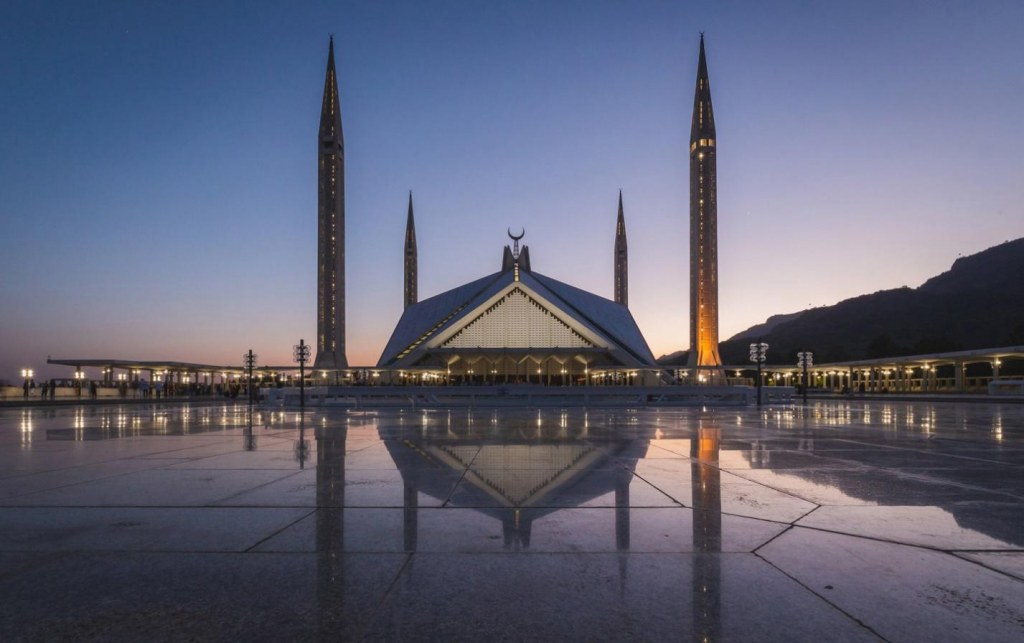
There are four beautiful minarets, each with a height of 90 meters. The completion of the mosque took place by 1986. With a covered area of 5000 square meters, the mosque has room for 74,000 individuals. The adjoining grounds can accommodate 200,000 people. Without a doubt, the Faisal Mosque is one of the most impressive state symbols of Pakistan.

Another one of the most important Pakistan state symbols, is our national poet Allama Iqbal. Born in Sialkot, Iqbal was a great philosopher, leader, and scholar. He was among the pioneering members of the Pakistan movement. Allama Iqbal wrote poems in Persian and Urdu. He was the first politician to present the idea of a separate nation for the Muslims of British India.
Inaugurated in 1993, the National Library of Pakistan is situated at Constitution Avenue, Islamabad. With 15 research rooms and a capacity to accommodate 500 readers, the library serves people of all ages. It is widely popular among students, scholars, and avid readers.
National Dress of Pakistan
The national dress of Pakistan is shalwar kameez. Both men and women wear the national dress with some variations. Common materials for shalwar kameez include cotton and lawn.
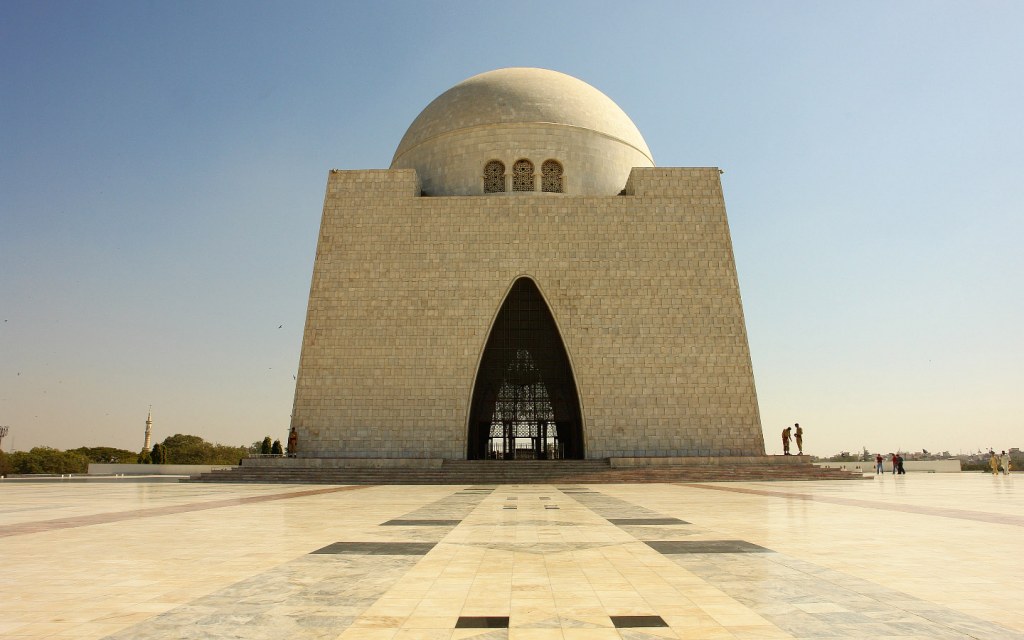
The national mausoleum of Pakistan is Mazar-e-Quaid or the Tomb of Quaid-e-Azam Muhammad Ali Jinnah. Its completion took place by 1970. Today, it is a popular tourist destination in Karachi.

While cricket is quite popular in the country, hockey is the national sport of Pakistan. There are several other sports which are popular in the country. Our country is famous for its Squash, Cricket, Volley Ball, and Kabaddi athletes. Pakistani players have a history of setting global records in many other sports. But, hockey continues to remain one of the most crucial state symbols of Pakistan.
Mango is the most popular and the national fruit of Pakistan. In fact, it is also the national fruit of India and the Philippines. The fruit is popular for its juicy pulp and mouth-watering sweetness.
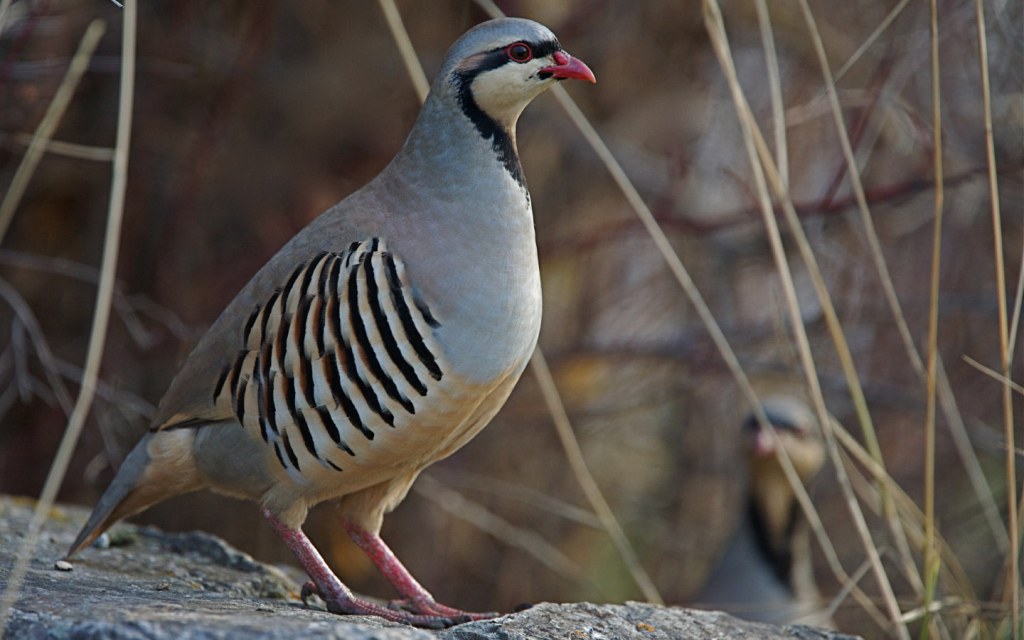
The national bird of Pakistan is chukar, which is a beautiful looking bird. Chukar or chakor is a challenging bird for hunters. That’s because it is capable of disappearing into the bushes quite easily.
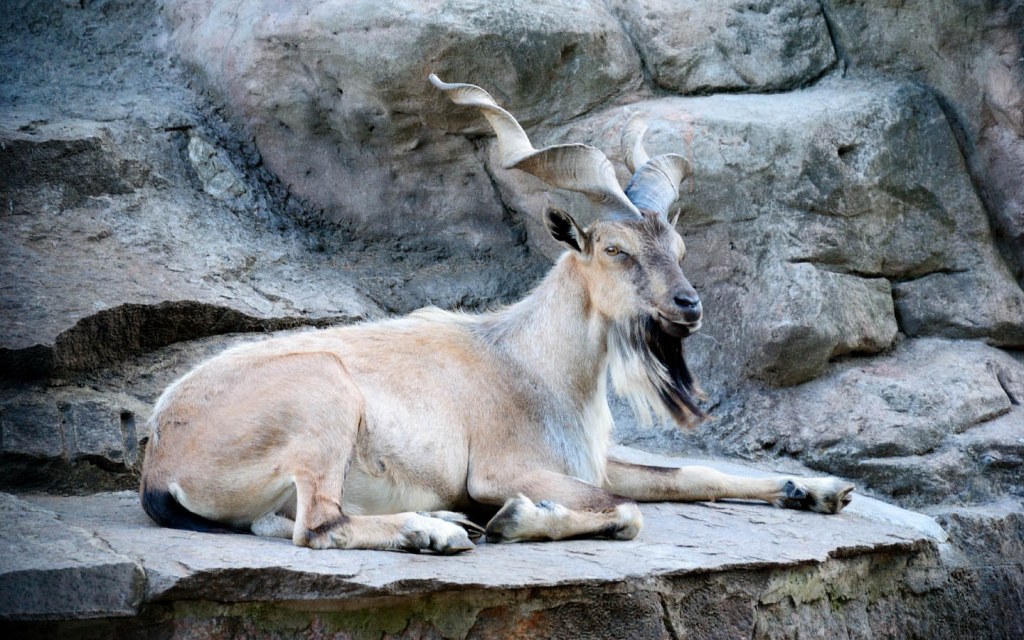
There are some amazing wildlife species found in Pakistan . But, the national animal of Pakitan is Markhor. Its weight is around 40-100 kg. It is typically found on the mountainous regions including Chitral, Ghizer, and Hunza. The word Markhor means ‘Snake Eater’ in Persian. Unfortunately, Markhors are now classified as endangered species. In 2018, Pakistan International Airlines used an image of Markhor on the tail of their planes. The purpose was to re-brand the airline’s image.
Cedrus Deodara or deodar is the national tree of Pakistan. With a height of about 40 to 60m, the trunk of the tree is up to 3 meters in diameter. The tree is popular as it has several medicinal attributes. In addition to that, it is also famous for its fragrant wood.
The national drink of Pakistan is sugarcane juice, among other Pakistan state symbols. It is commonly referred to as Roh or Gunney ka Rus. You can easily find sugarcane juice on the street corners of every city, especially in summers.
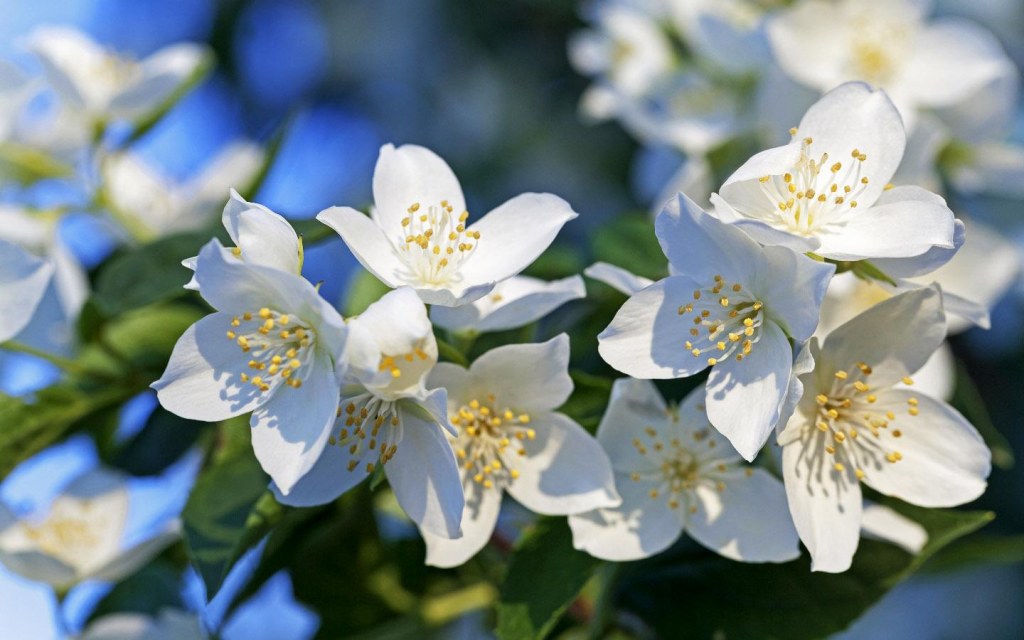
Finally, Gardenia or Jasmine is the national flower of Pakistan. There are around 250 species of this flower. The flower is particularly popular for its characteristic fragrance and simplistic beauty.
Our national colors are green and white. Both these colors are featured in the flag of Pakistan. The dark green color represents the Muslim majority of the country whereas the white colour symbolizes all minorities.
In 1956, Pakistan became the Islamic Republic of Pakistan with Islam as its official religion. Subsequently, ‘Ittehad, Tanzim, and Yakeen-e-Muhkam’ was adopted as the national motto. The literal translation of the expression is Unity, Faith, and Discipline.

River Indus is the longest and largest river in Pakistan. Approximately two-thirds of the water supplied in our homes and for irrigation come from Indus and the rivers associated with it. River Indus is 3, 180 km long and plays a crucial role in the agriculture of Pakistan since we don’t get much rain.

K2 is our national mountain which rises steeply above the Karakoram Range along the Pak-China border. Mountain climbers all around the world consider it the toughest mountain to climb. In fact, K2 remains as one of the world’s greatest challenges for even the most seasoned climbers. The name of this pyramid-shaped mountain is derived from the mountain range Karakoram.
Okra or commonly known as lady-finger, is the national vegetable of Pakistan. Not only it is easily available, but the vegetable is low on calories and packed with vitamins and minerals.
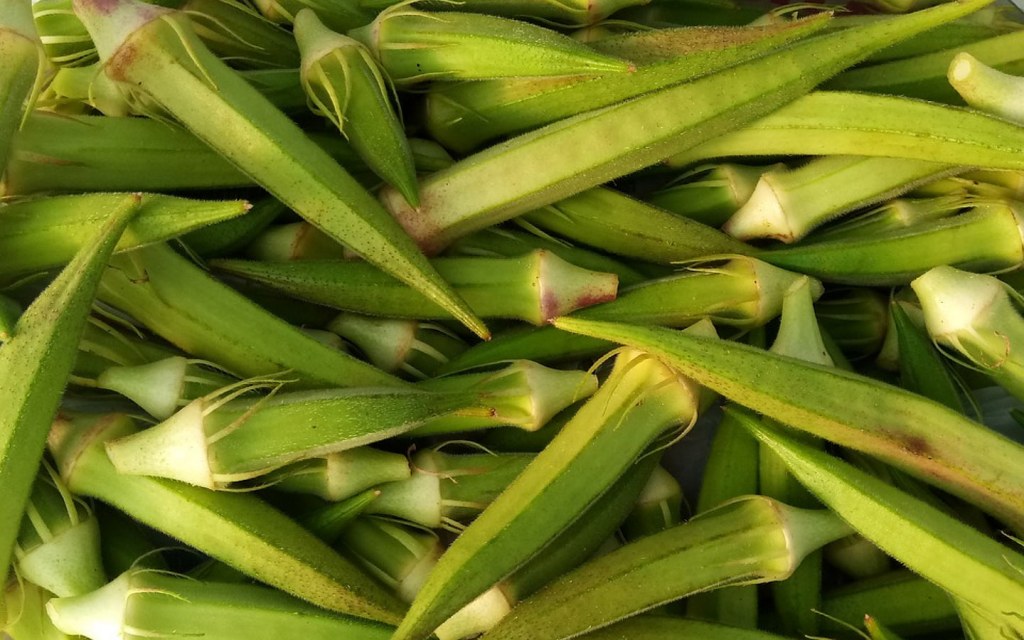
We are sure you’ve learned about a few new state symbols of Pakistan. If you like our list, do share it with your friends and family.

1 Kanal Plot Trends in DHA, Lahore

Here are Some Amazing Eid Decor Ideas for Your Home

Dream Gardens Family Property Gala
Subscribe For Daily Blog Alert
Get the Zameen App
Sliding sidebar.

IMAGES
COMMENTS
The white jasmine, scientifically known as Jasminum officinale, is a fragrant flower that belongs to the olive family. It is commonly known as "Chambeli" in Pakistan, and is celebrated as the national flower of the country. The enchanting fragrance and mesmerizing beauty of the white jasmine have made it a popular flower in Pakistan, and it ...
National Flowers: Apart from Pakistan, Jasmine is also the national flower of Indonesia, the Philippines, and Syria, showcasing its global appeal. How to Grow Jasmine. Growing Jasmine in your garden or balcony can be a delightful experience, offering you a daily dose of its mesmerizing scent. Here's how you can cultivate this beauty:
Pakistan, with its diverse topography and climate, is home to a wide range of flora and fauna. The national flower of Pakistan, the Jasmine, thrives in its natural , which includes both the plains and the mountainous regions of the country. The natural of the Jasmine encompasses a variety of ecosystems, ranging from arid deserts to lush valleys.
The national flag was designed by Muhammad Ali Jinnah, the founder of Pakistan, [15] and was based on the original flag of the Muslim League. It was adopted by the Constituent Assembly [16] on 11 August 1947, just days before independence. [17] [18] [19] The flag is referred to in the national anthem as Parcham-e-Sitāra-o-Hilāl in Urdu (lit.Flag of the Crescent and Star).
The National Flower of Pakistan, JASMINE. For thousands of years, the jasmine plant has been cultivated not only for the beauty of its small, white, star-like flowers, but it has also been prized for its intoxicating scent. Originating in the foot hills of the Himalayas and Ganges plains, the plant was cultivated and brought to India, China ...
The national flower of Pakistan holds deep meaning and symbolism, representing the rich heritage and cultural identity of the country.The national flower of Pakistan is jasmine, a genus of shrubs and vines known for its sweet smell and beautiful white flowers.. In Pakistani culture, jasmine is associated with purity, innocence, and beauty. It is often referred to as the "king of flowers ...
The national emblem of Pakistan was adopted in 1954 and comprises a floral wreath of jasmine that surrounds the national shield. It is especially an ode to the Mughal culture and heritage, whilst being popularly referred to as Pakistan's logo. The emblem represents the true idea behind what is the meaning of Pakistan.
The National flower of Pakistan is Jasmine. The meanings of the Jasmine flower are related to love and romance. It represents sensuality and beauty. Because of its vivid white color and paradisiacal scent, the jasmine flower is a source of attraction in the gardens. Lovers like to whisper soft words in the moon garden.
Embark on a scented journey through Pakistan's national flower, Jasmine. From its delicate petals to its captivating fragrance, discover why this blossom hol...
Pakistan is a country of diverse cultures. It is one of the fewer nations with all four kinds of weather, lots of different ethnicities and religions. Also, it is full of natural resources and has the most diverse culture of natural stuff. Jasmine is the National Flower of Pakistan and today; we are going to …
Overview. The National Anthem of Pakistan, known as "Qaumi Tarana" in Urdu, is a significant emblem of national unity and pride. Adopted in 1954, three years after the country's inception, it is performed at state occasions and national holidays, standing as a powerful symbol of Pakistani identity.
National Bird of Pakistan. The National Bird of Pakistan is known as Chakor, which is a red-legged partridge. The bird Chakor belongs to a Pheasant family. Chakor is a beautiful bird commonly found in Pakistan that has an ashy pink-brown color with a comparatively larger white color chin and the throat which is boarded with dark black color.
It's a highly scented delicate-looking white flower on a tall vining shrub and part of the olive family. It's a frequent sight in Pakistan, and naturalized in many other places including Europe, the Americas, and Oceania. Jasmine is called Chambeli in Pakistan and was chosen to be the national flower of Pakistan on July 15, 1991.
The National symbols of Pakistan (Urdu: پاکستان کی قومی علامتیں); Each Country of the world adopts some signs or emblems, which they regard as the representative of their country traits. Pakistan has several "Official National Symbols".Pakistanis have several official National symbols including a historic document, a flag, an emblem, an anthem, a memorial tower as well ...
National flower of Pakistan. View all national symbols of Pakistan and more! Symbol Hunt. National Symbols. Compare Search Countries Continents Territories States Quiz Flag Colors Home » Asia » Pakistan » National Flower What is the National flower of Pakistan 2024? ...
The National Flower of Pakistan is Gardenia or Jasmine. The People of the country also calls it Chambelli. The flower's color is a unique blend of white along with yellow. The white tint of Jasmine petals represents peace. Jasmine is quite abundant in Pakistan.
Jasminum officinale (Urdu:یاسمین) is the common Jasmine flower plant. It is in the family Oleaceae. It is famous for its scent. It is also known as "Poet's J...
Jasmine is known as the national flower of Pakistan it is pronounced as chambeli (Urdu) or yasmin (GIFT FROM GOD) via Arabic or it is locally called Motia, Jasmine sambac is a bushy vine or scrambling shrub with shiny dark green leaves and fragrant little white flowers. Originating in the foot hills of the Himalayas and Ganges plains, the plant ...
The jasmine is also a symbol of national pride and is often worn by Pakistanis. The jasmine is the national flower of Pakistan and is a symbol of the country's beauty. Jasmine is the national flower of Pakistan. Jasmine is a genus of shrubs and vines in the olive family. They are native to tropical and temperate regions of Eurasia ...
For thousands of years, the jasmine plant has been cultivated not only for the beauty of its small, white, star-like flowers, but it has also been prized for...
The national mausoleum of Pakistan is Mazar-e-Quaid or the Tomb of Quaid-e-Azam Muhammad Ali Jinnah. Its completion took place by 1970. Today, it is a popular tourist destination in Karachi. National Sports Pakistan has won the World Cup Hockey Cup four times. While cricket is quite popular in the country, hockey is the national sport of Pakistan.
The National Anthem of Pakistan, [a] also known by its incipit "The Sacred Land", [b] is the national anthem of the Islamic Republic of Pakistan and formerly the Dominion of Pakistan. [1] First composed by Ahmad G. Chagla in 1949, lyrics in Persified Urdu were later written by Hafeez Jalandhari in 1952. It was broadcast publicly for the first time on Radio Pakistan on 13 August 1954, sung by ...